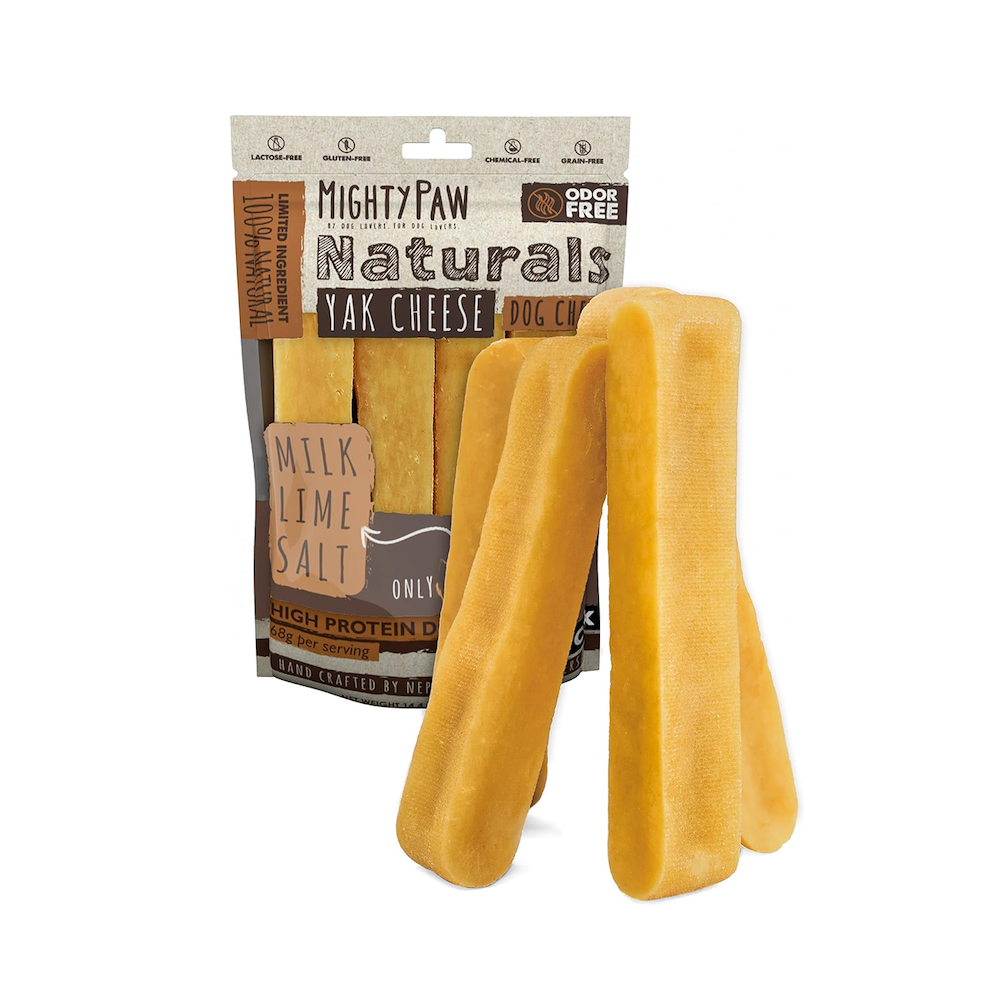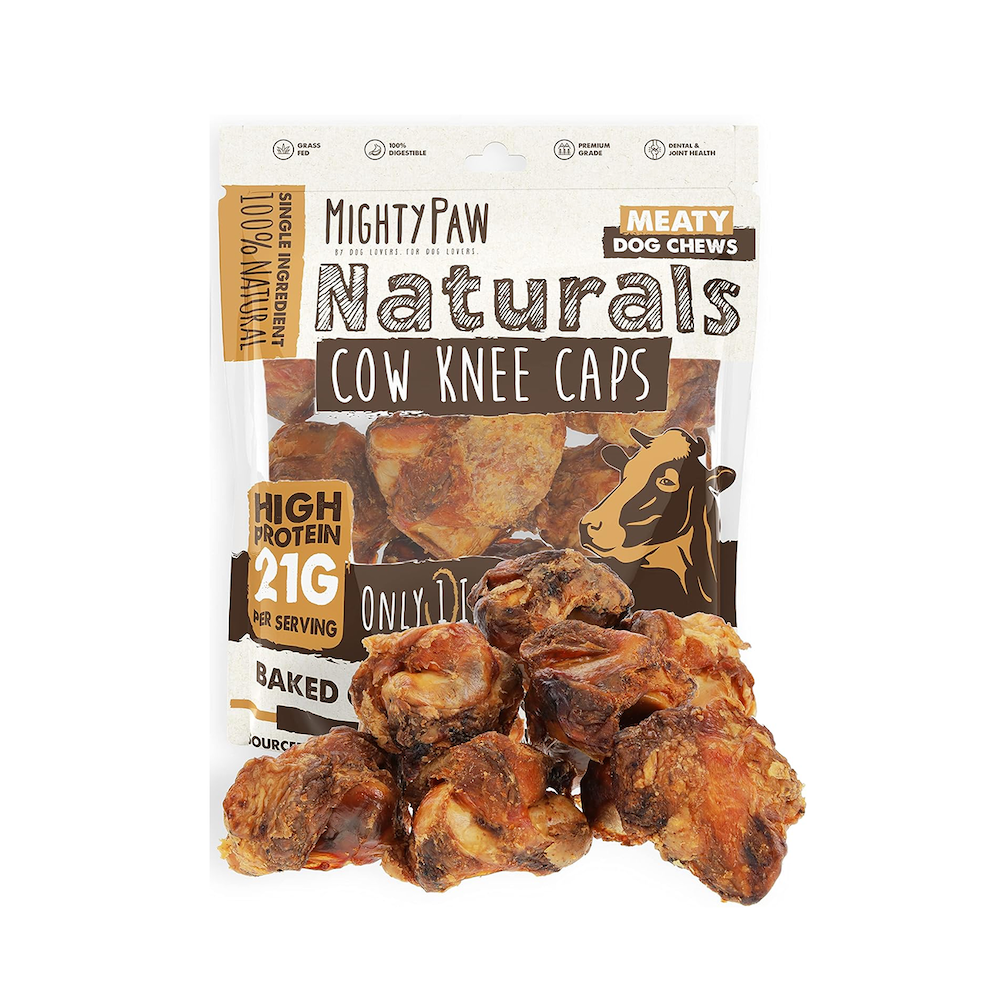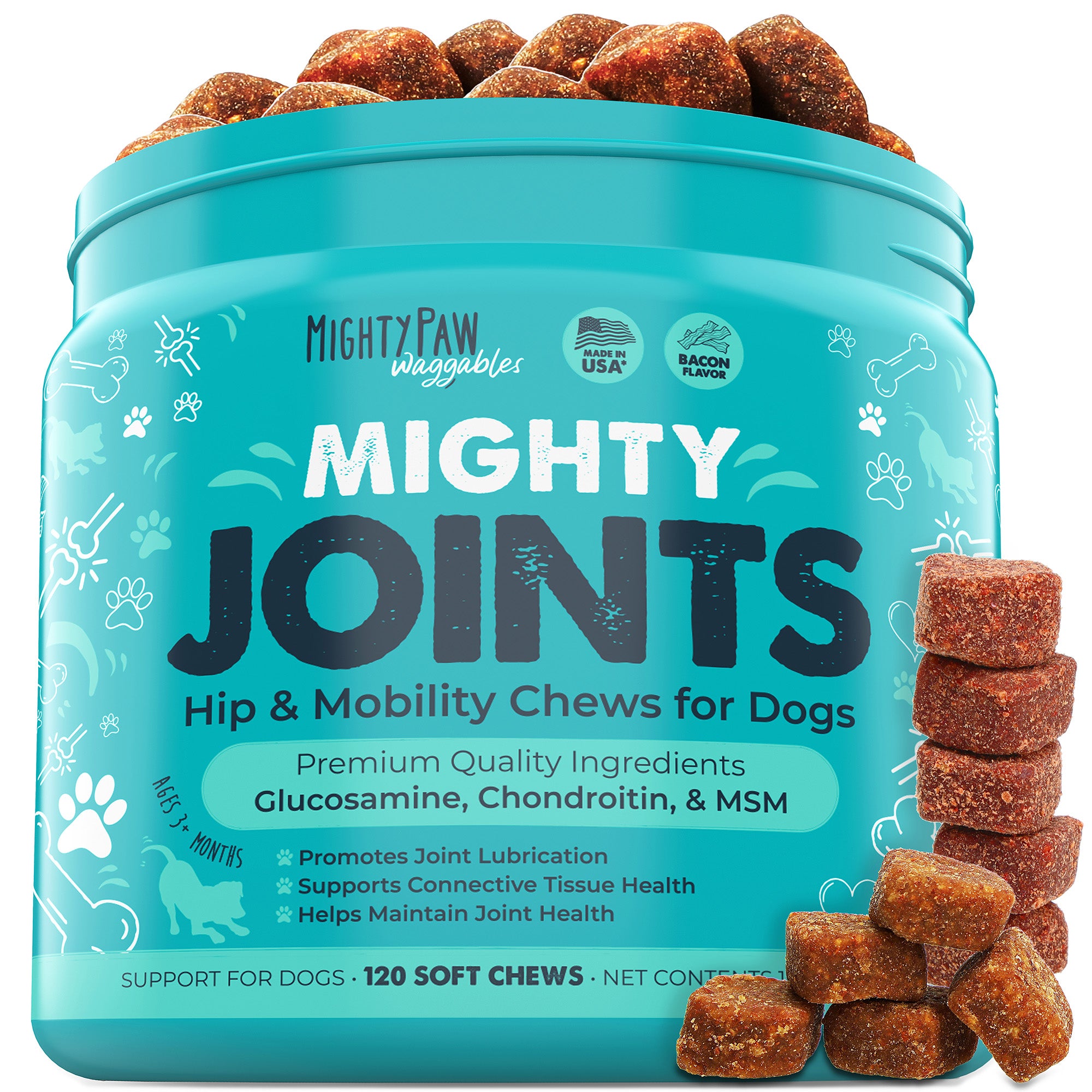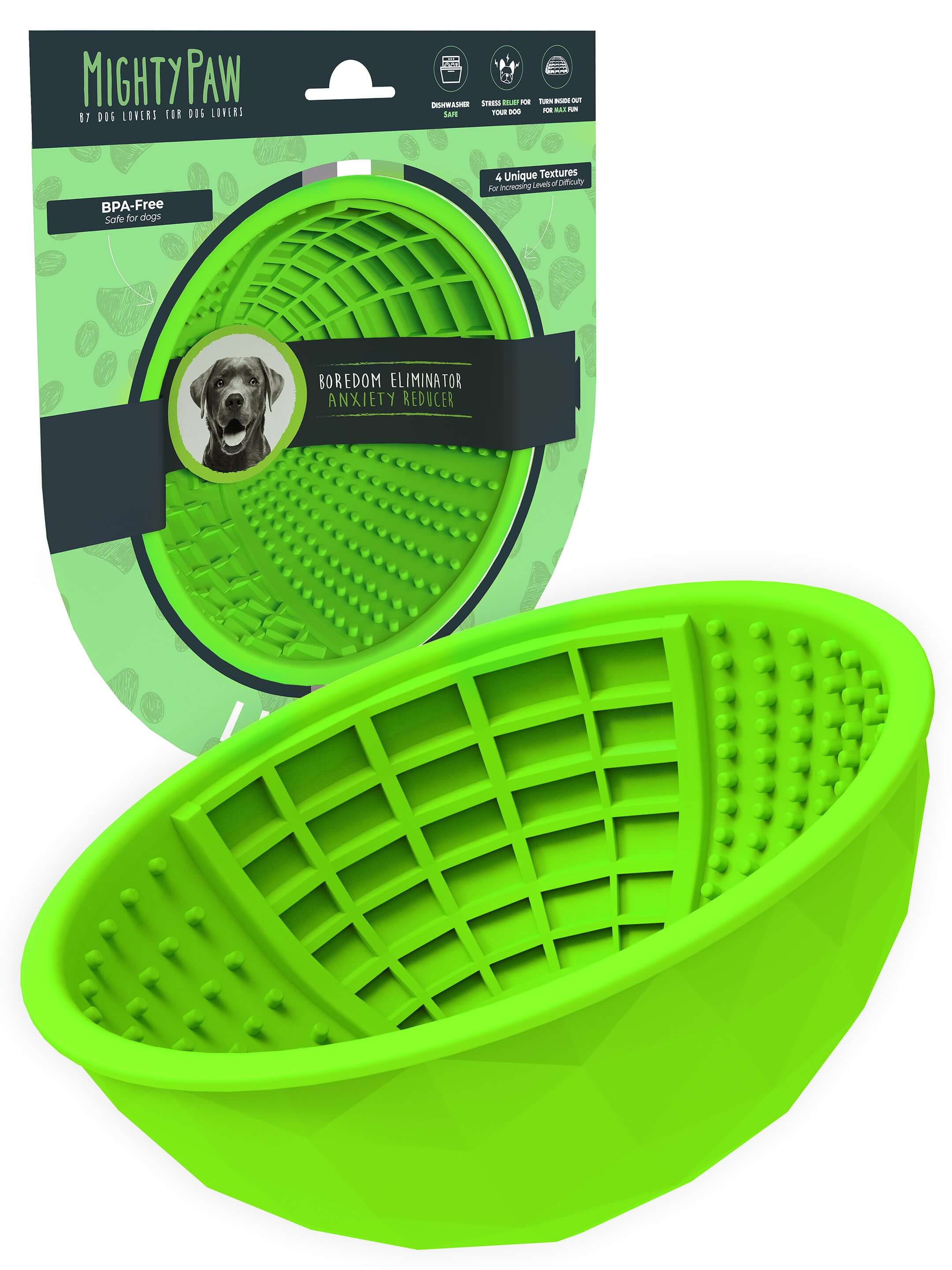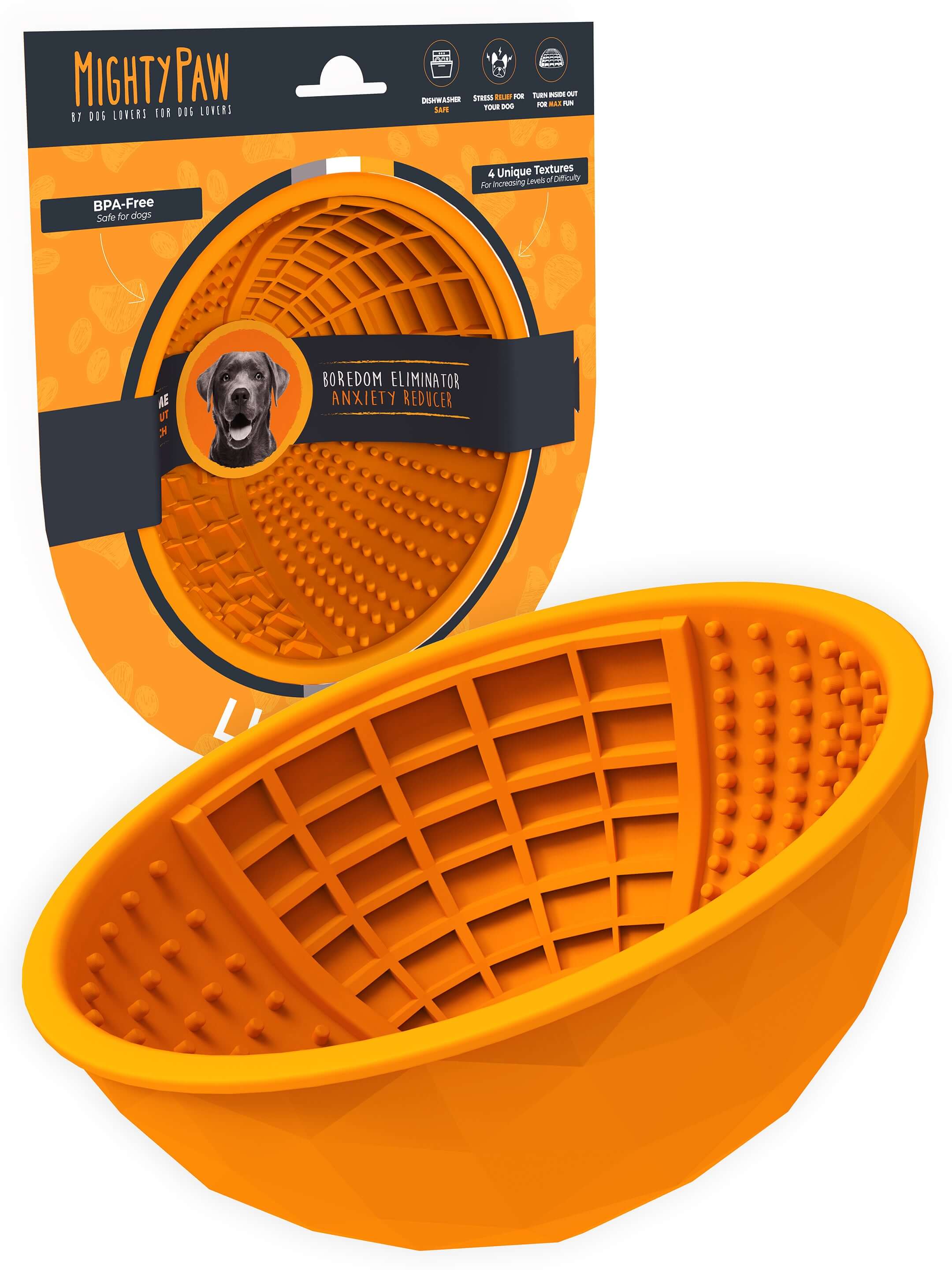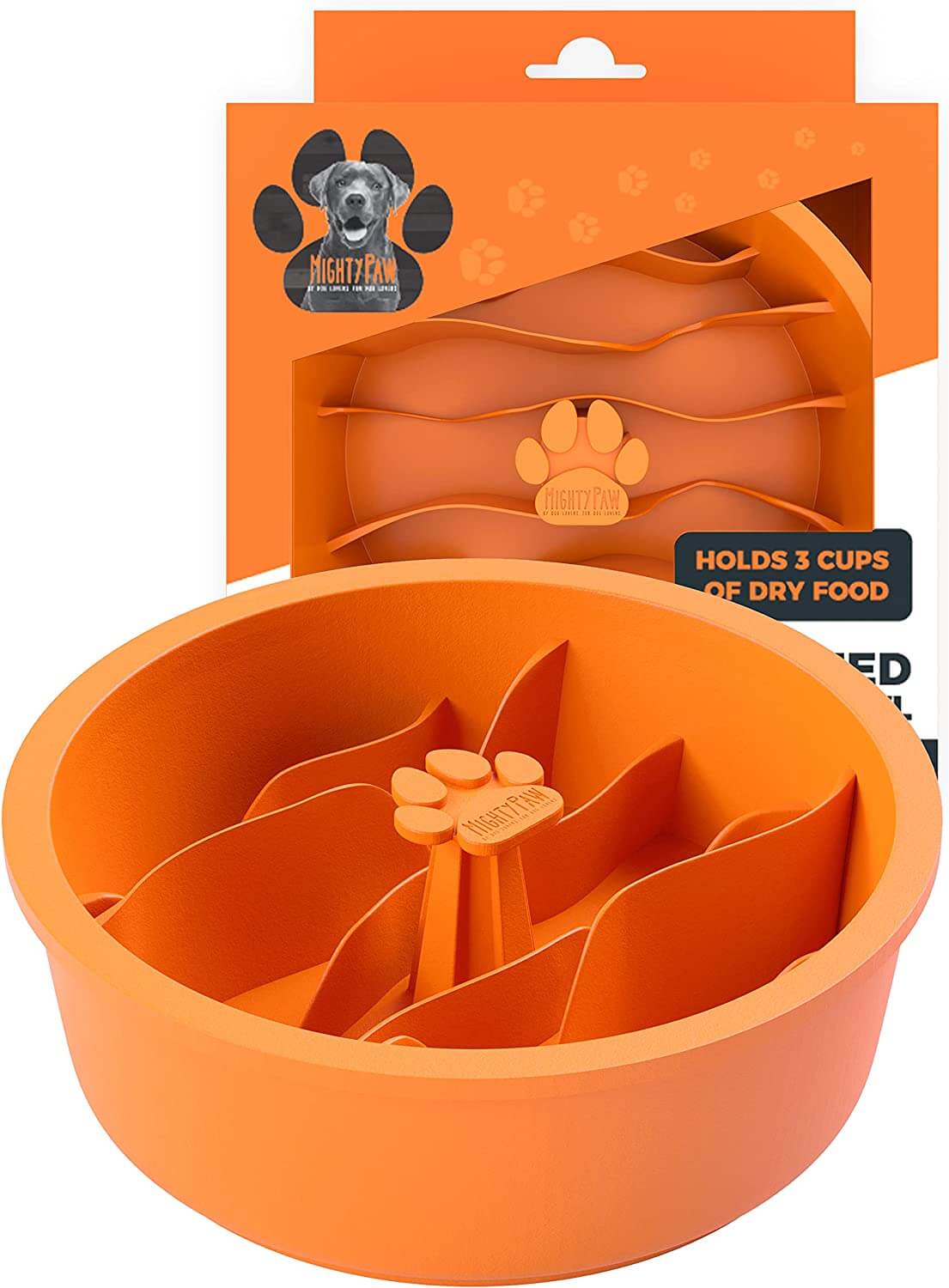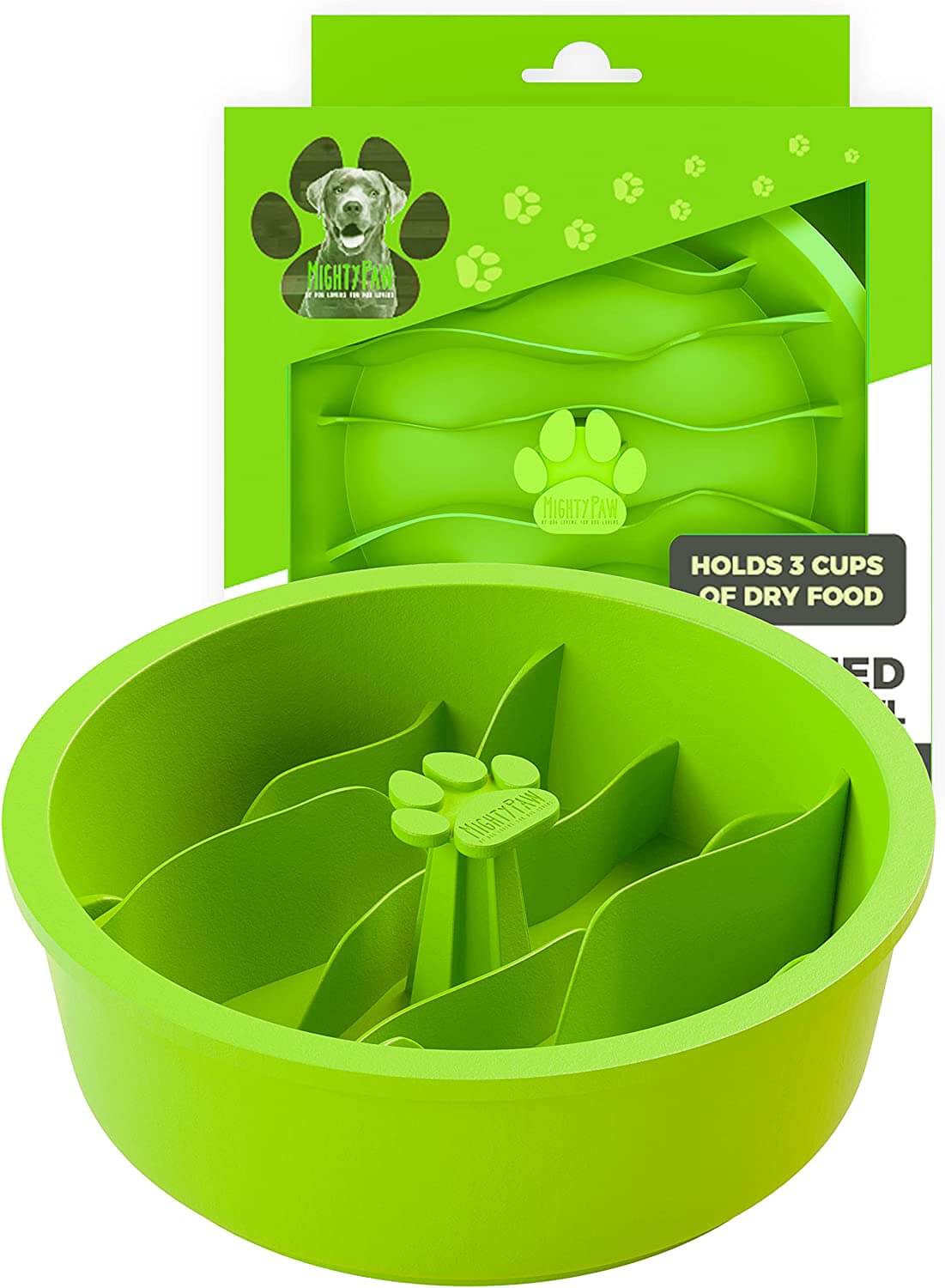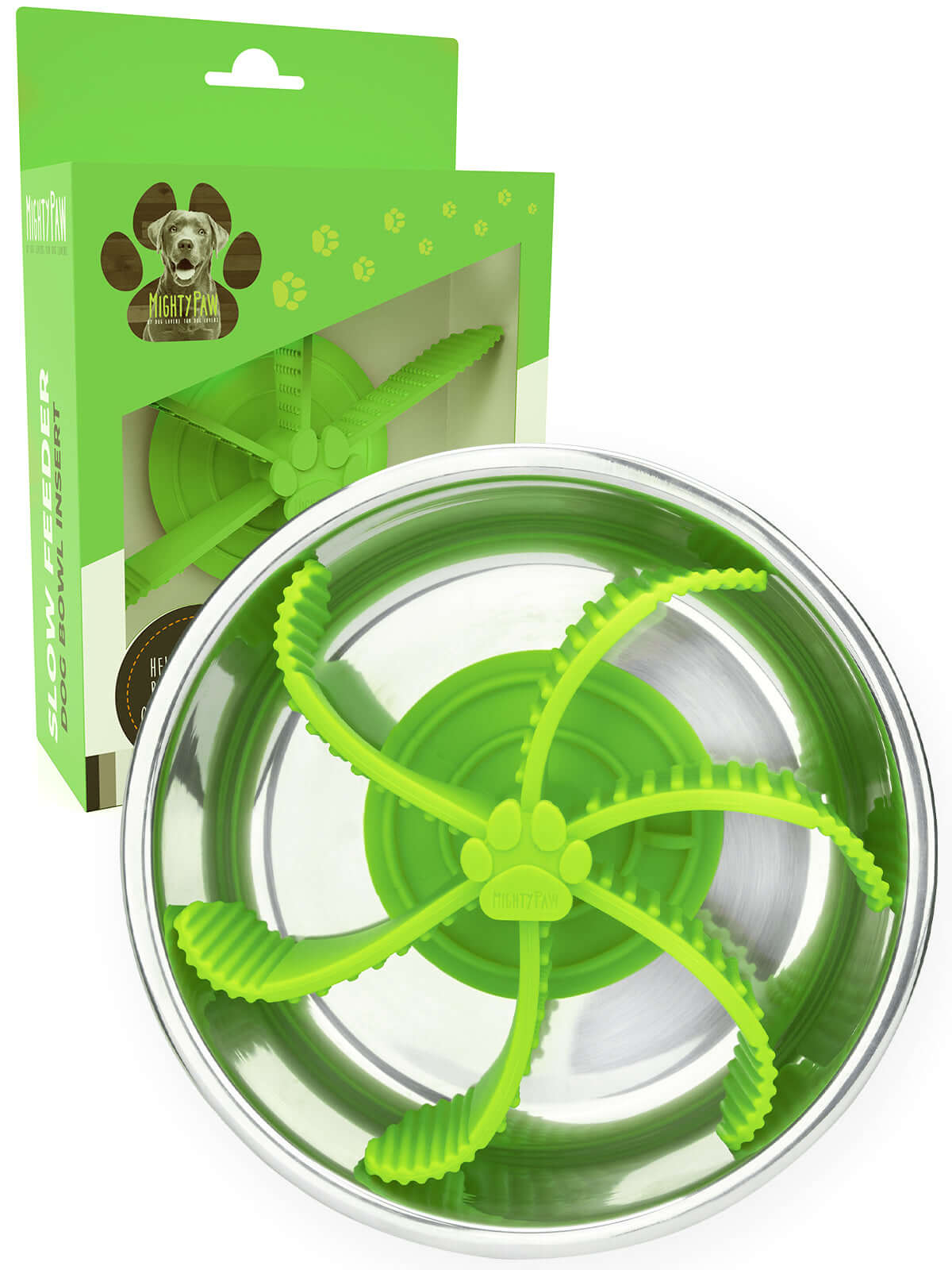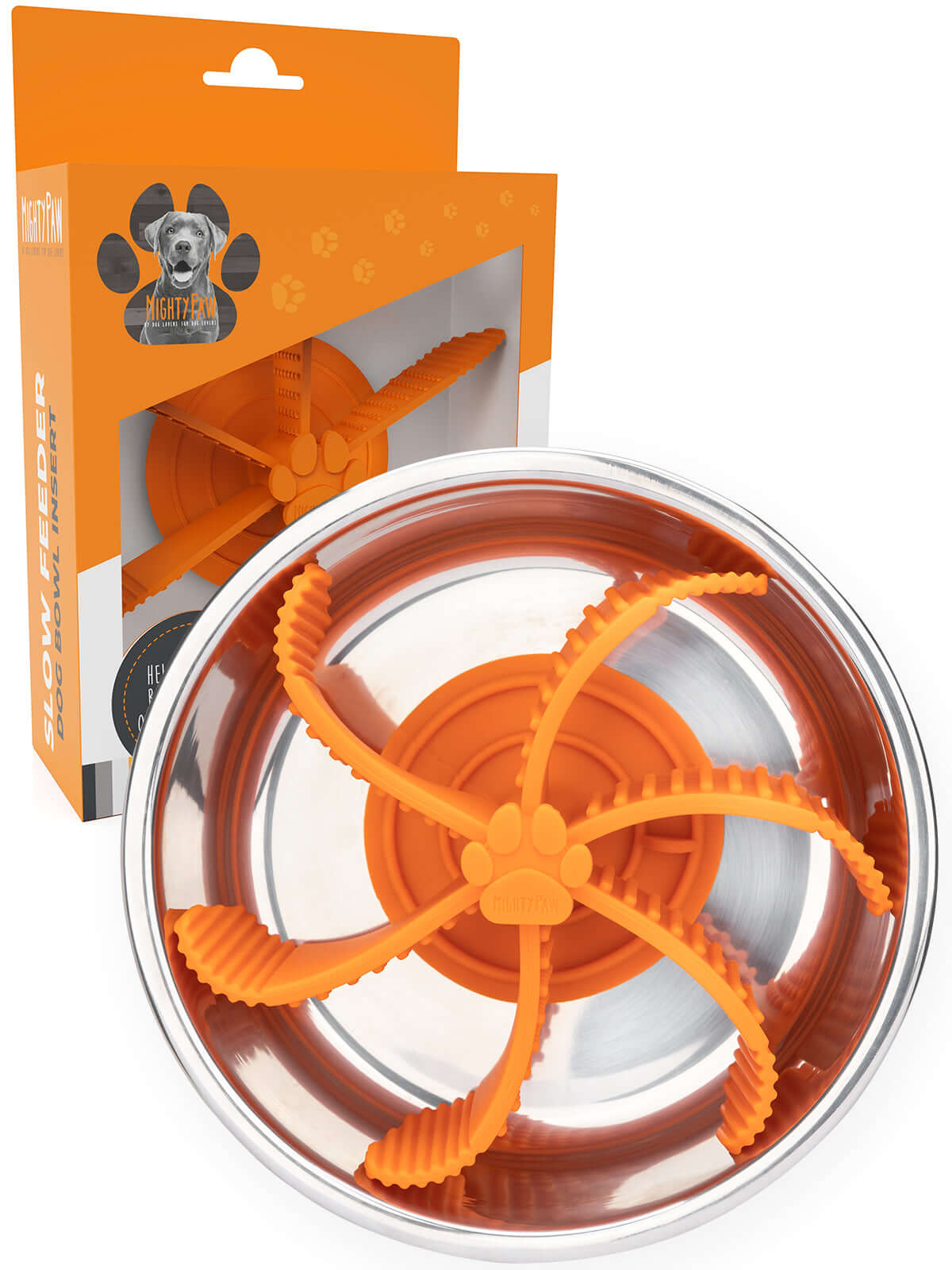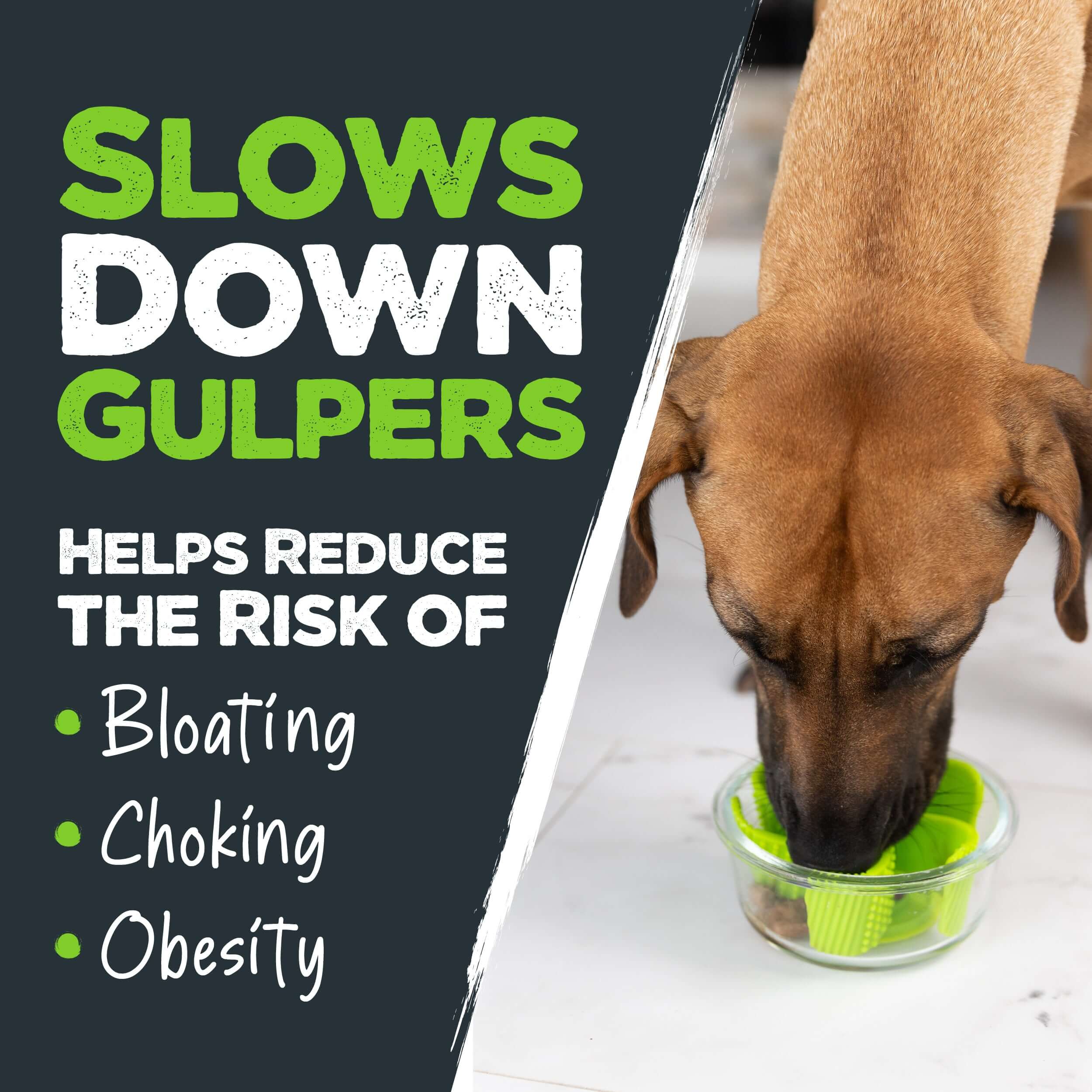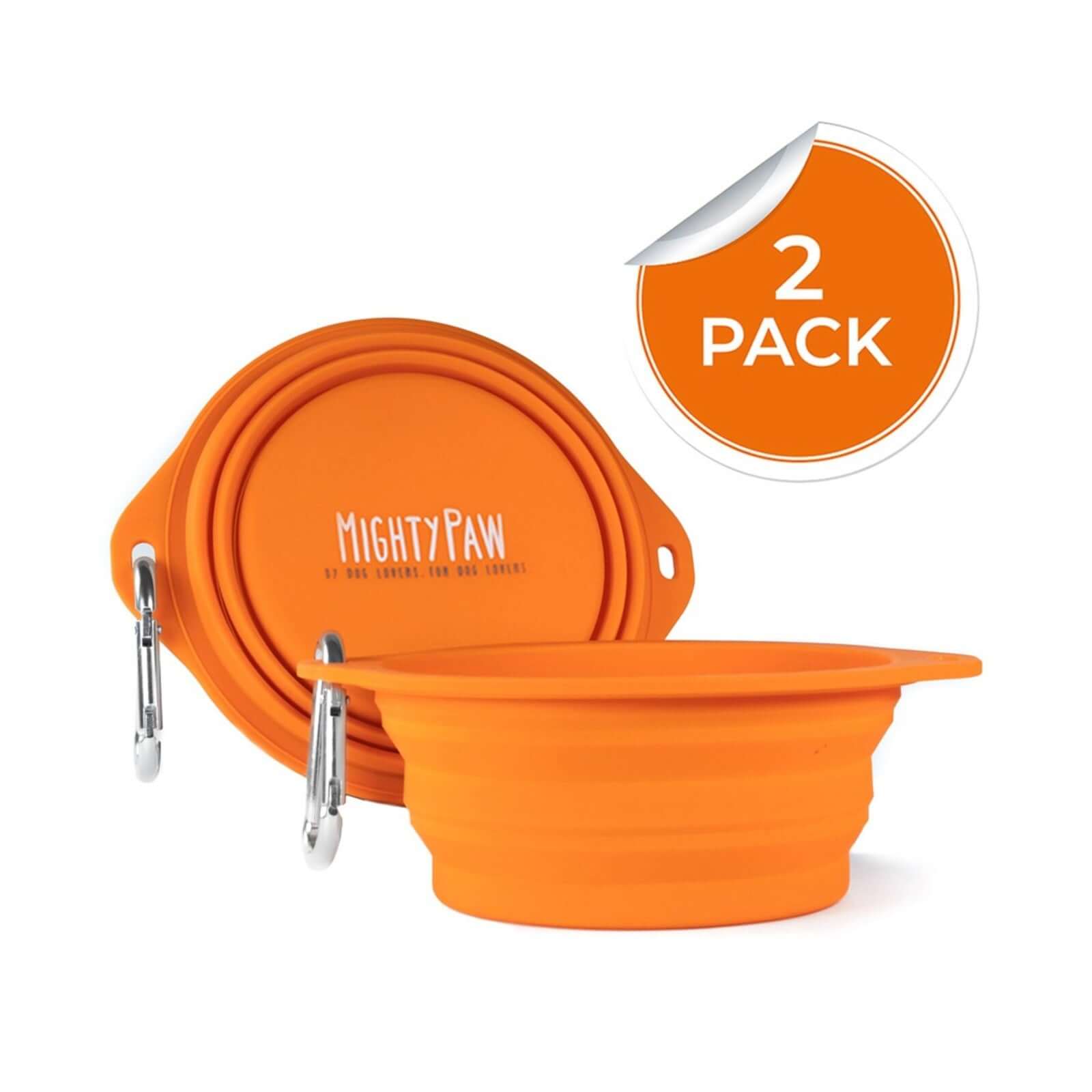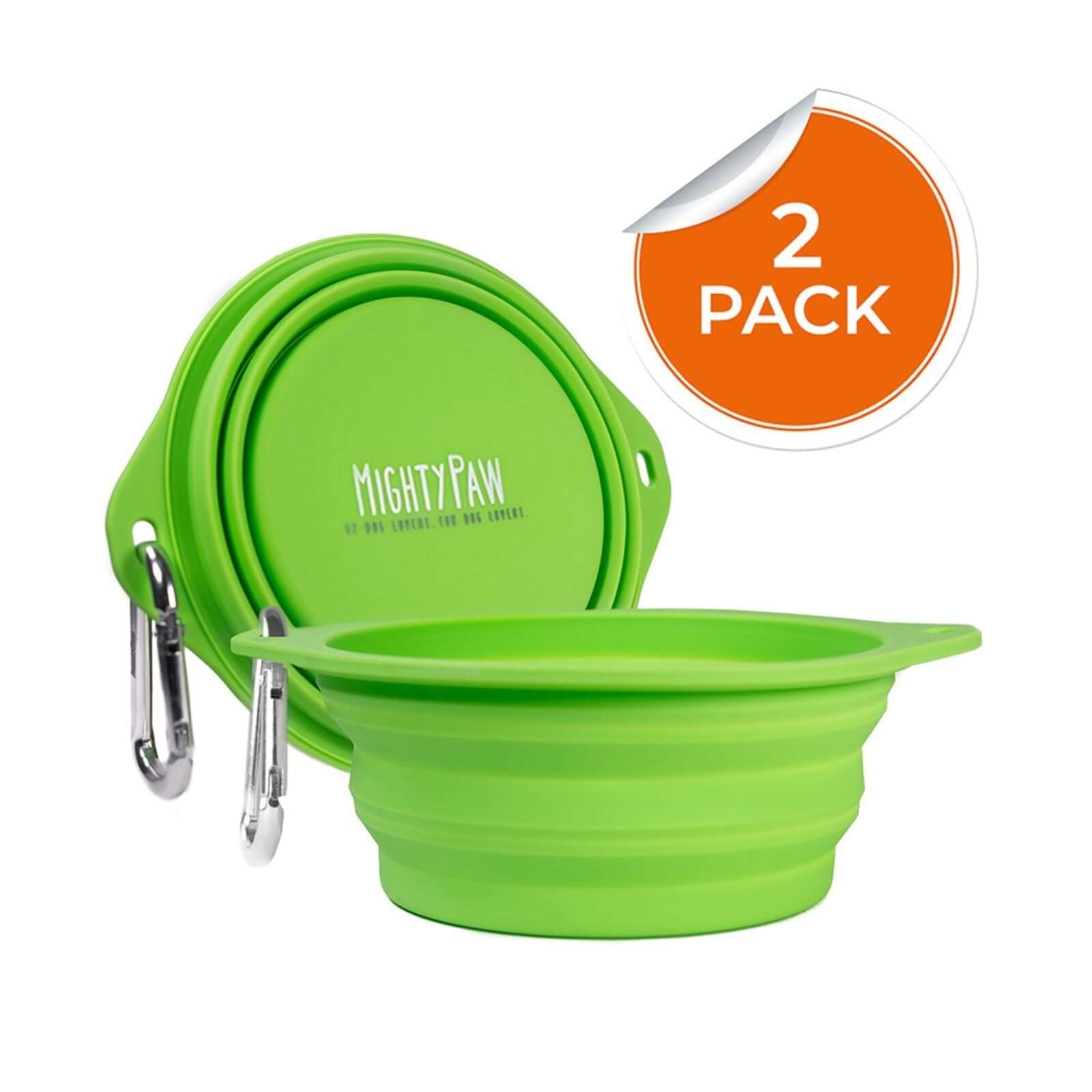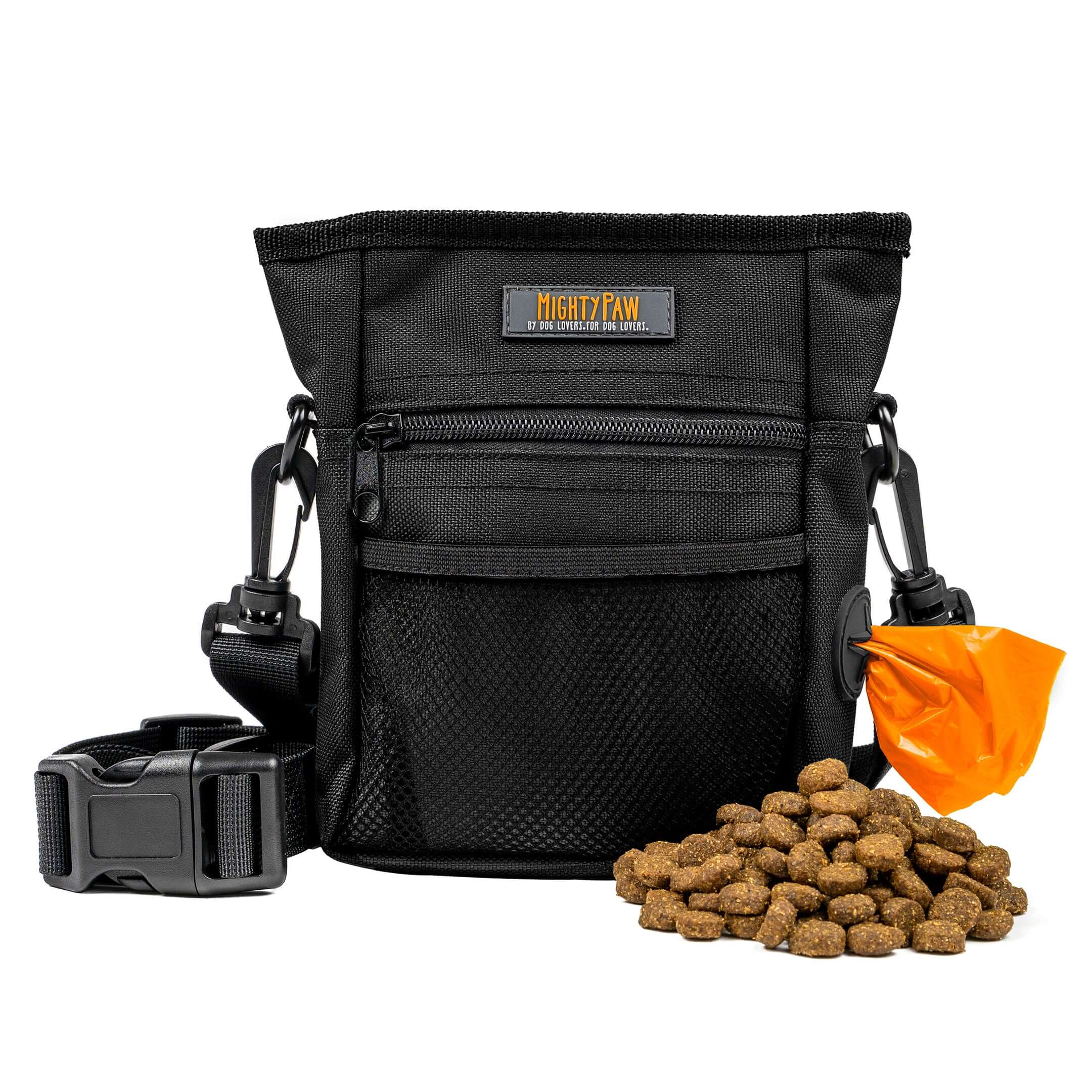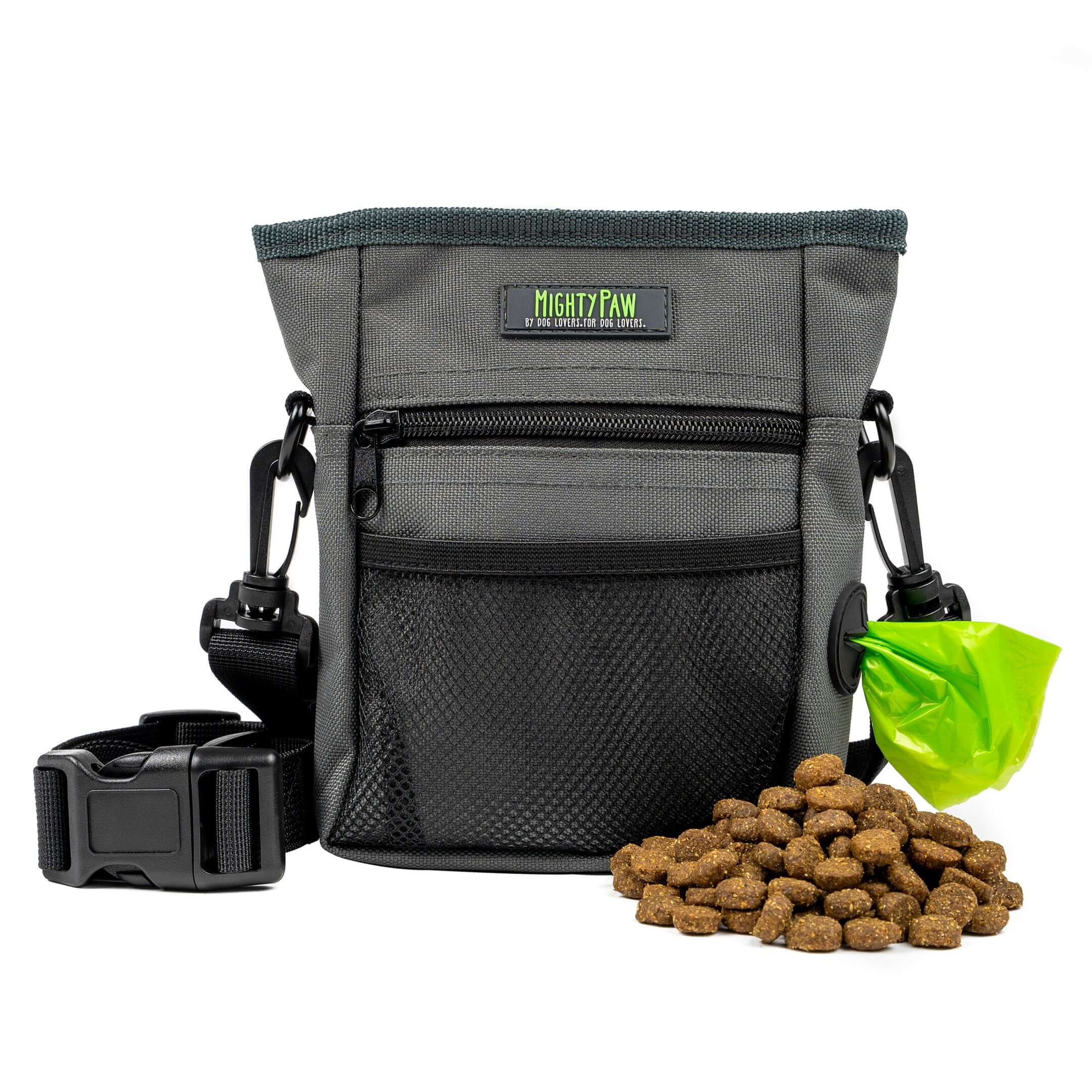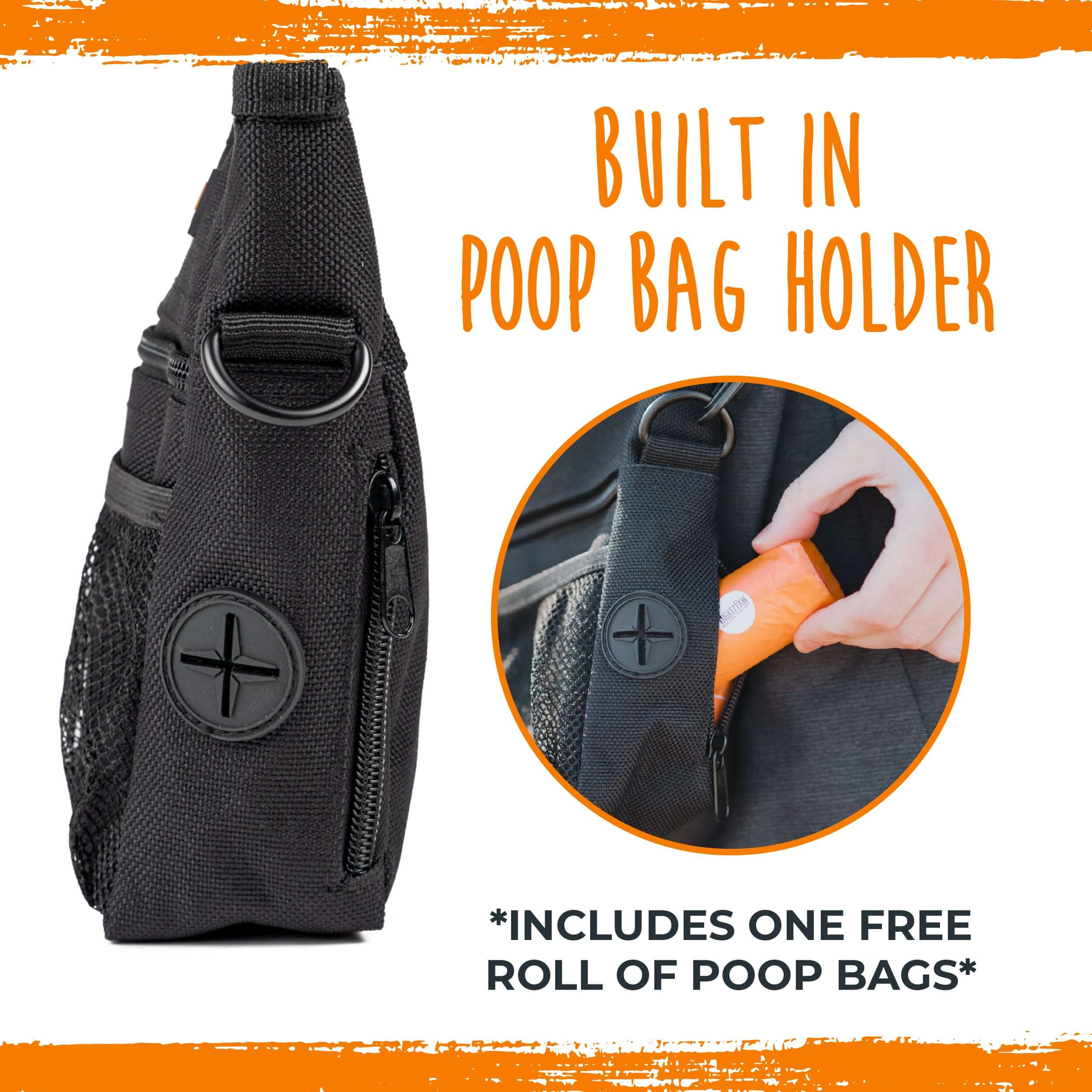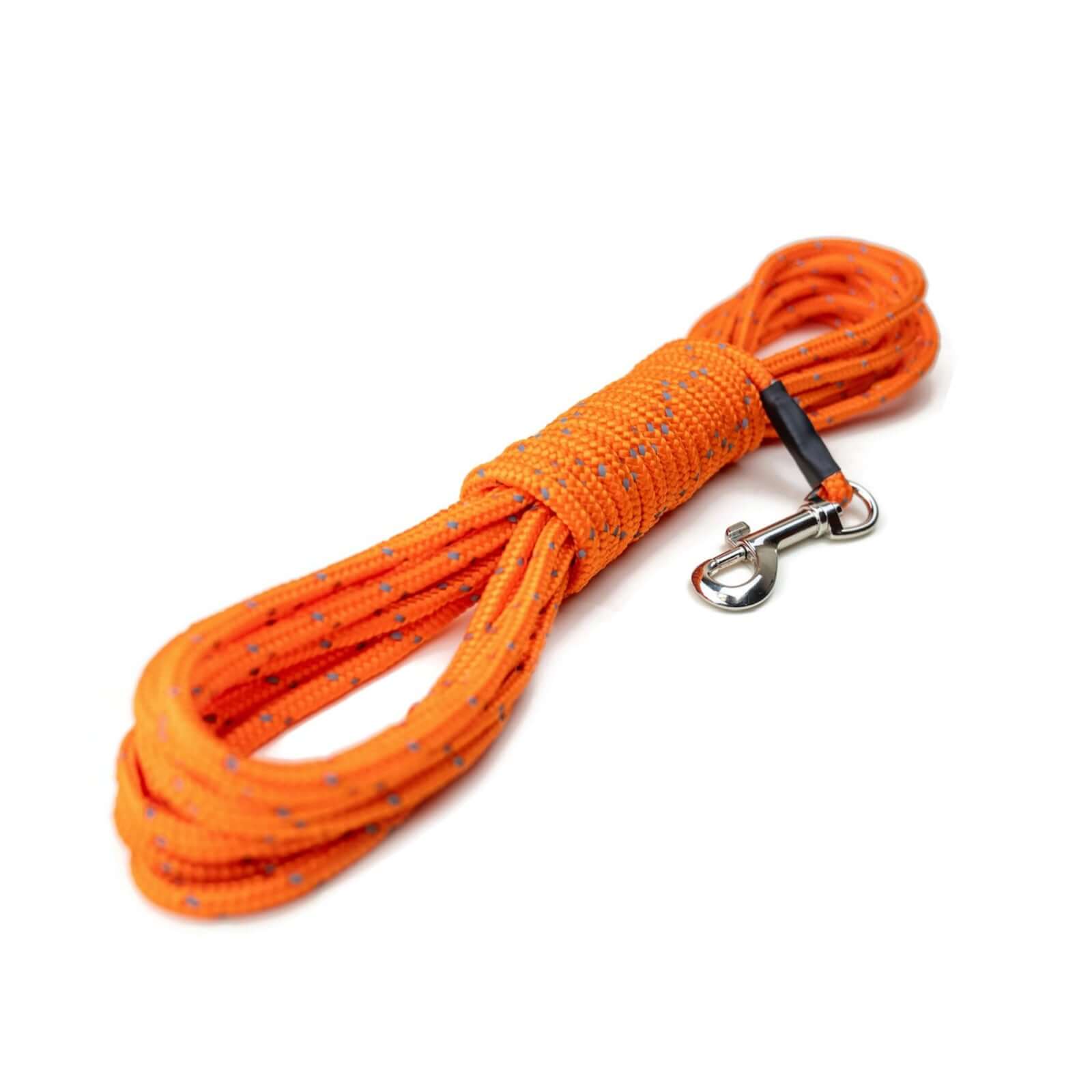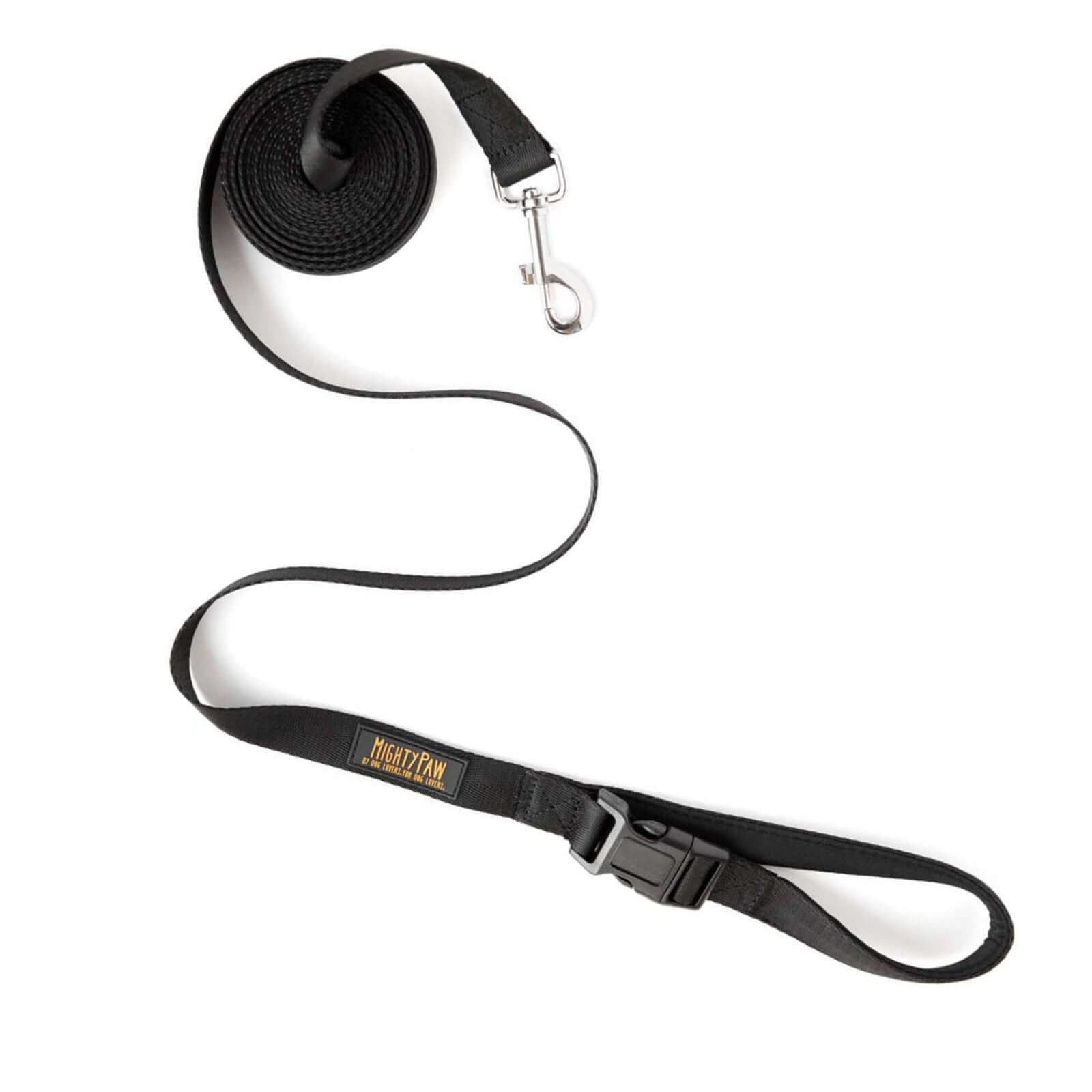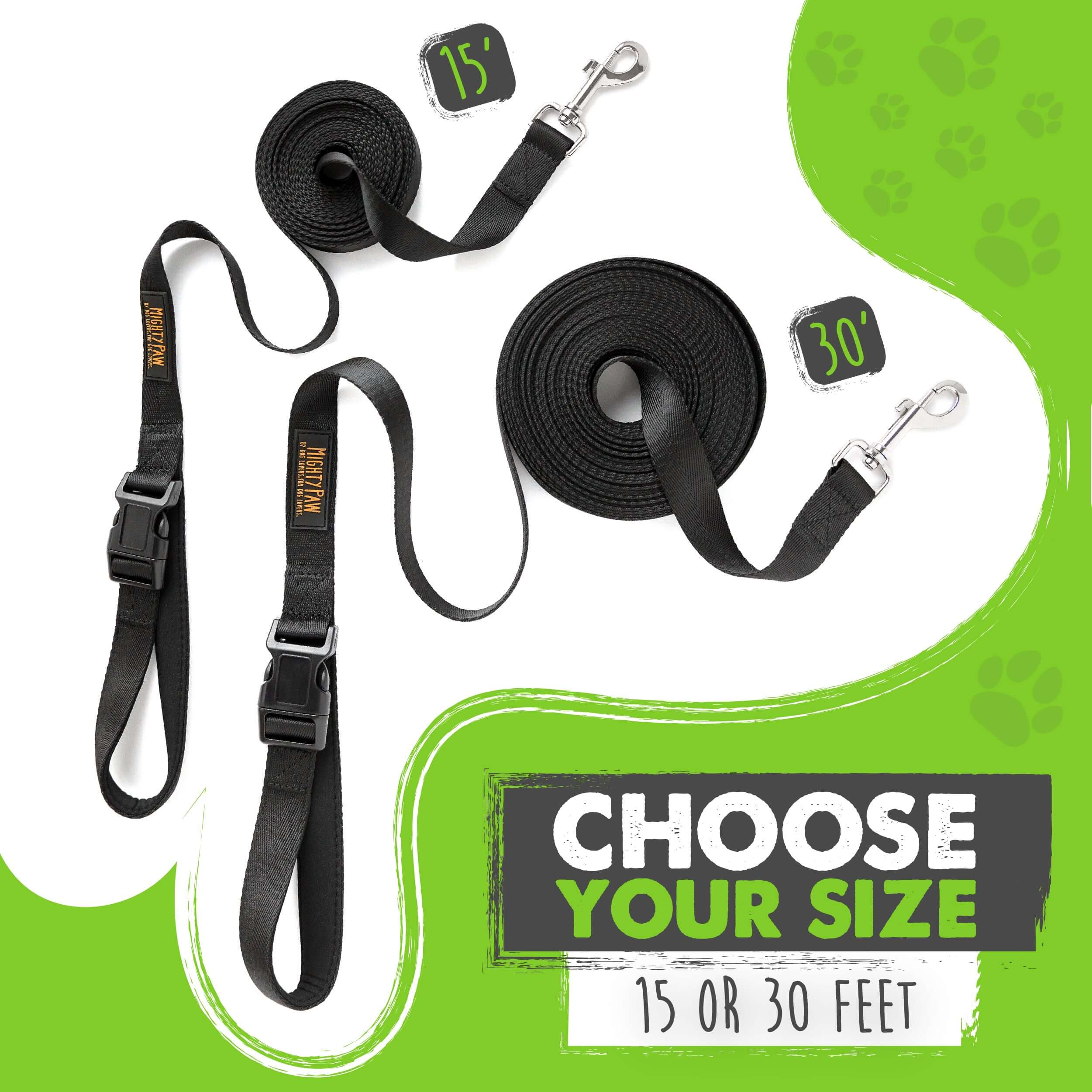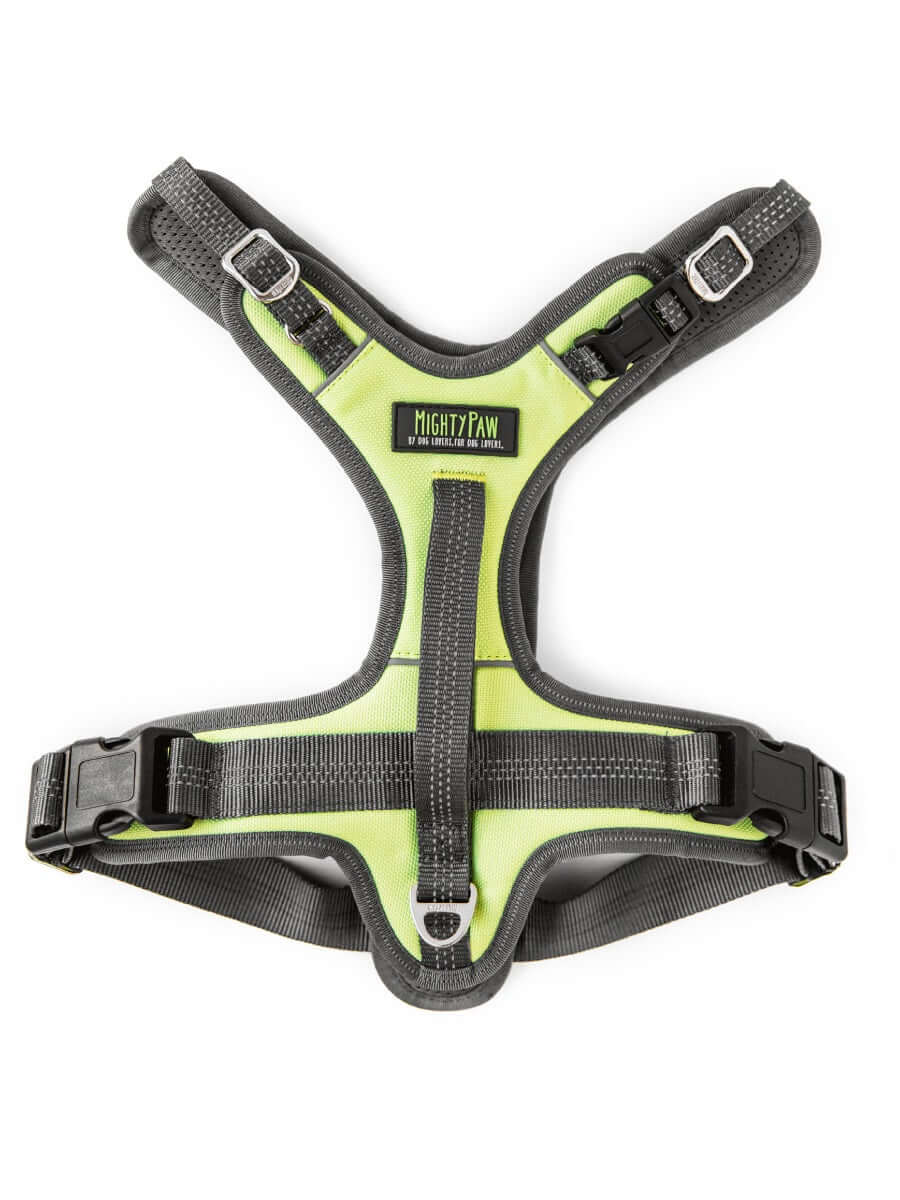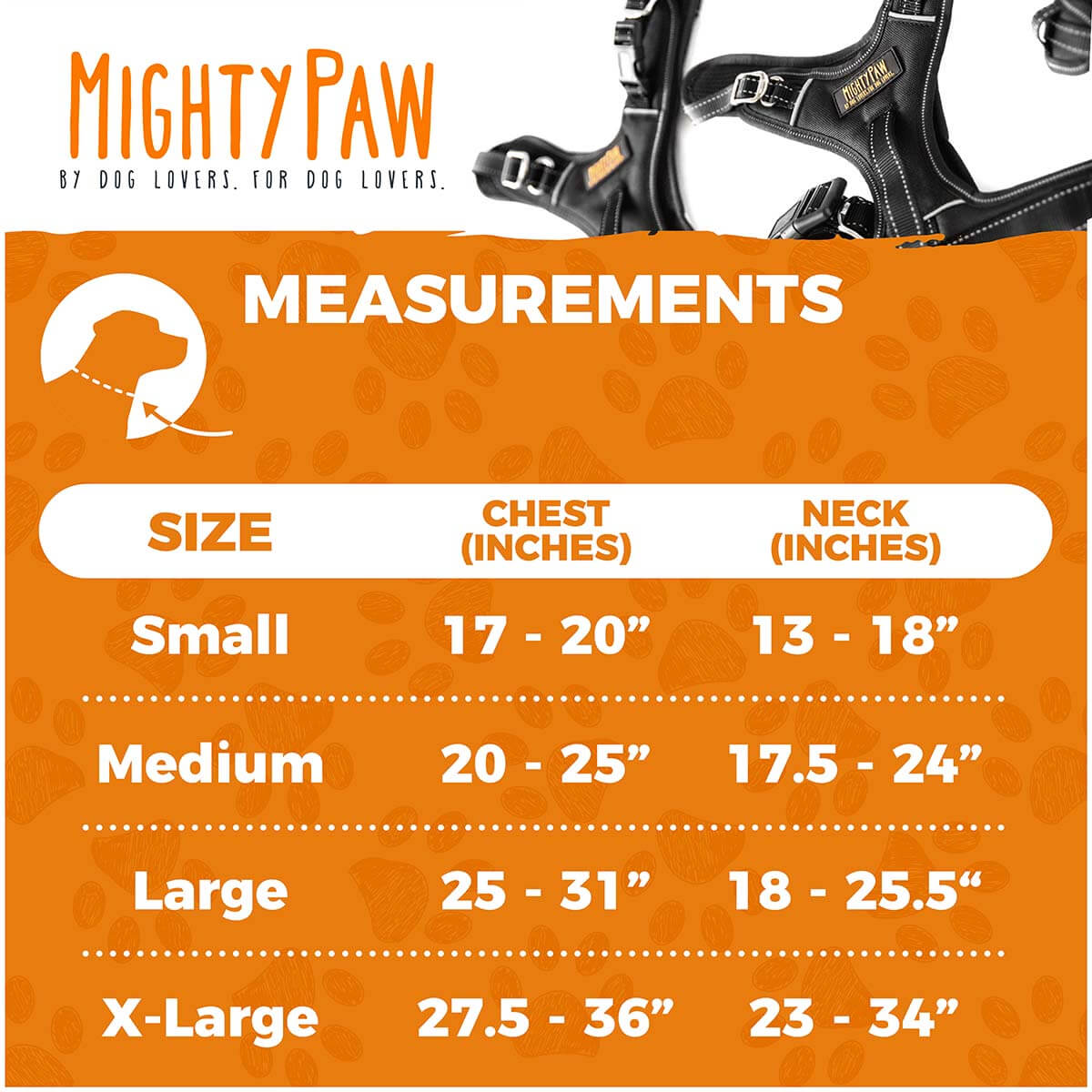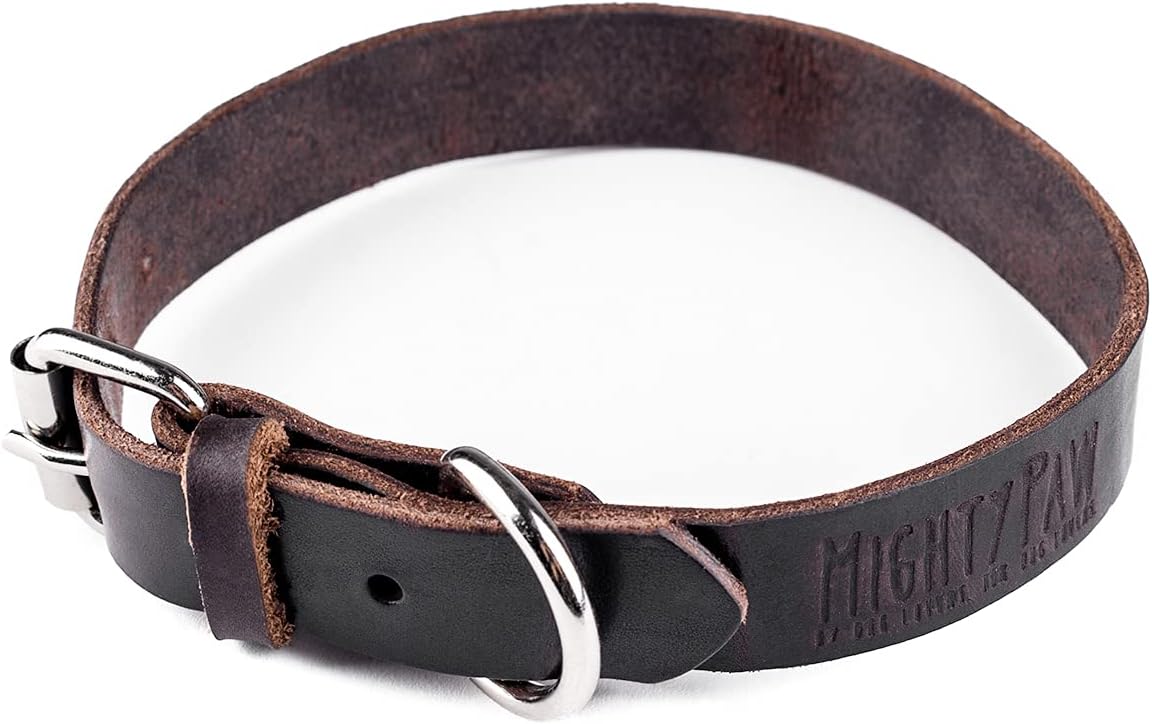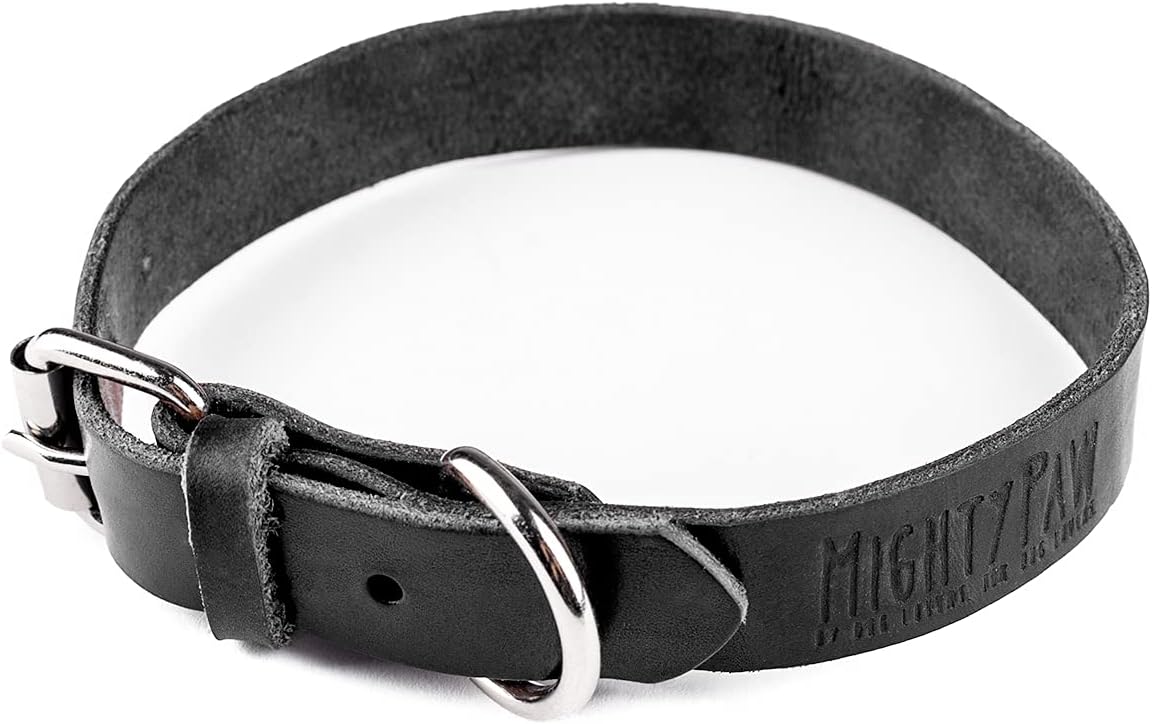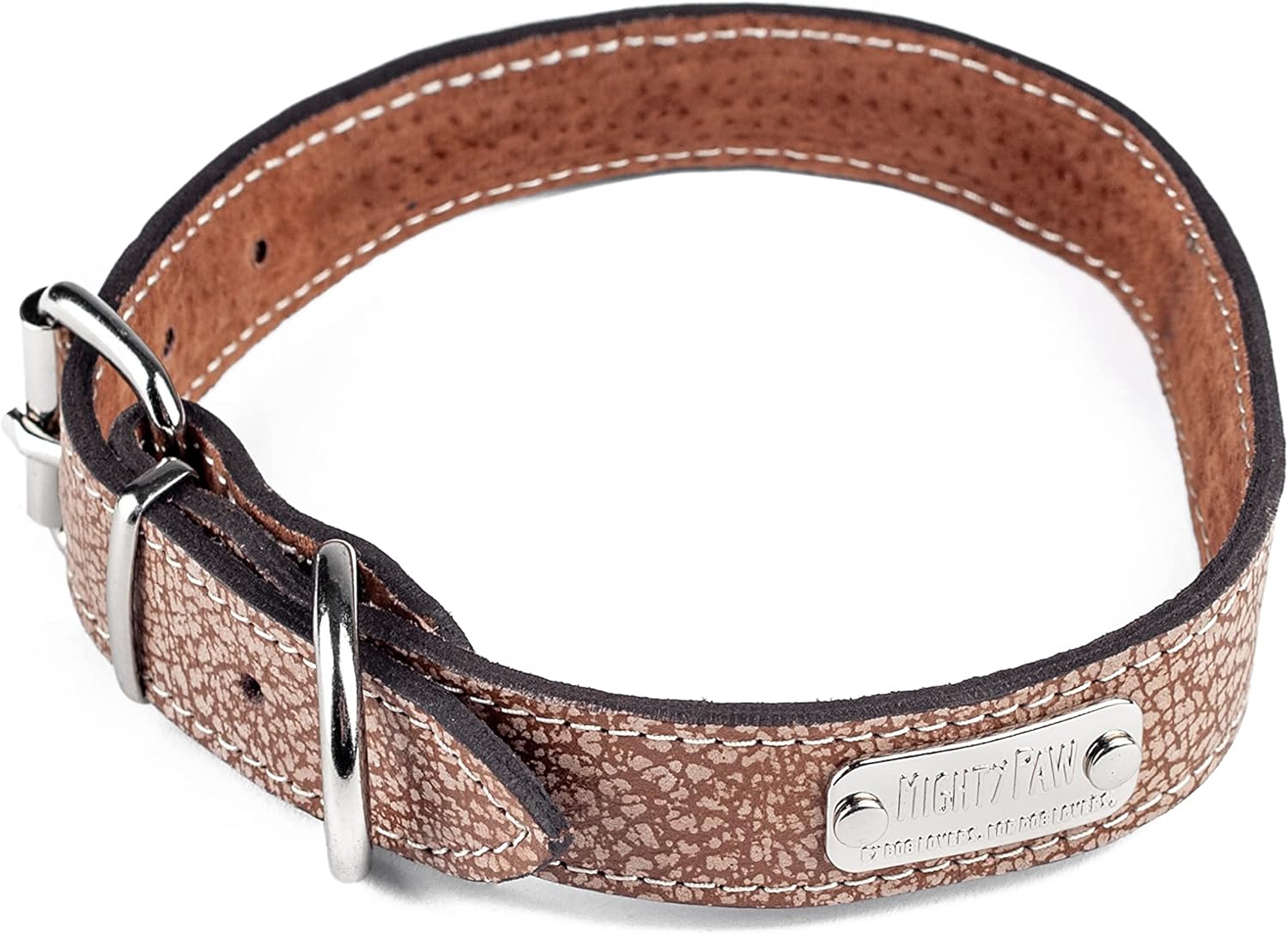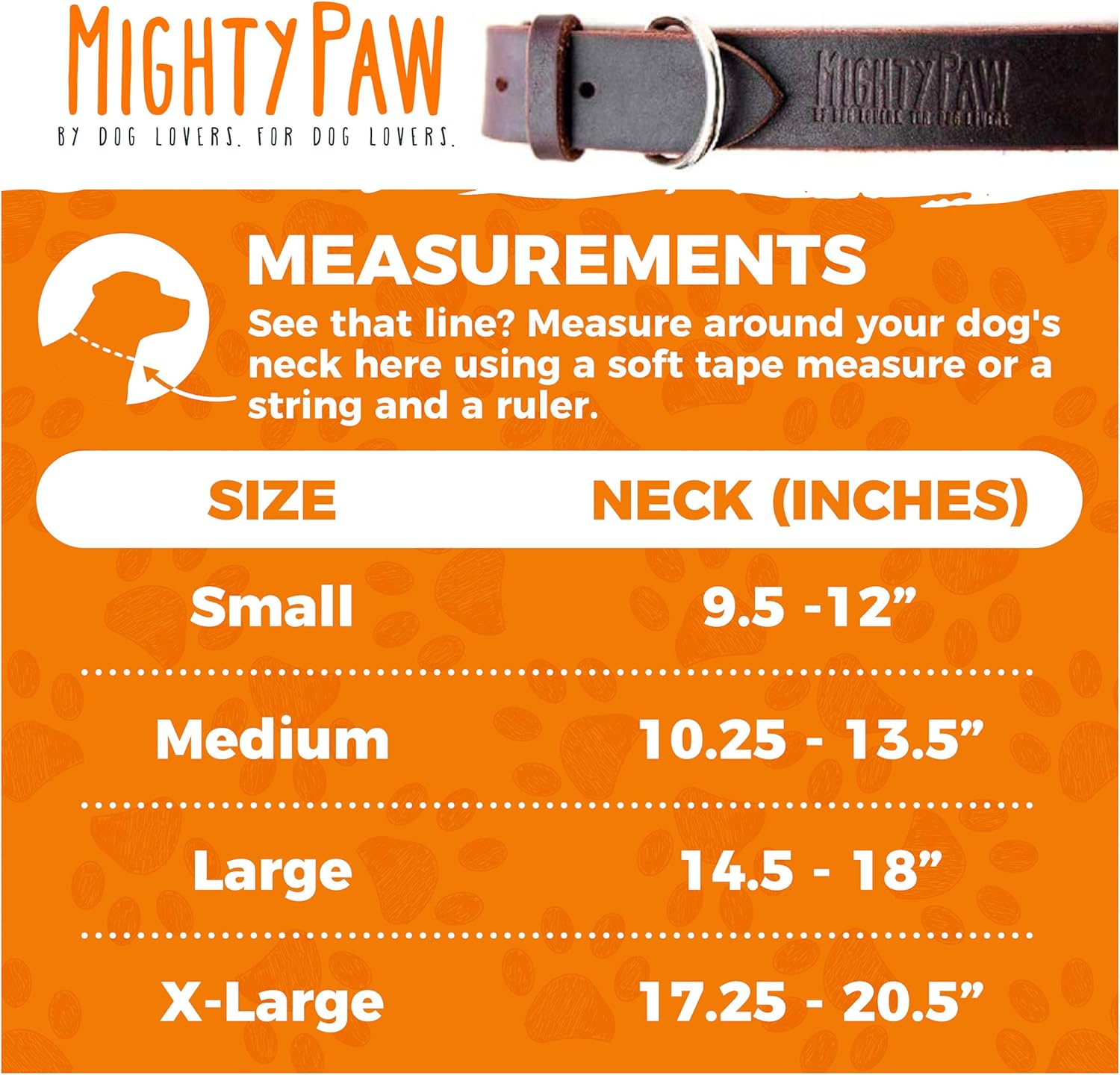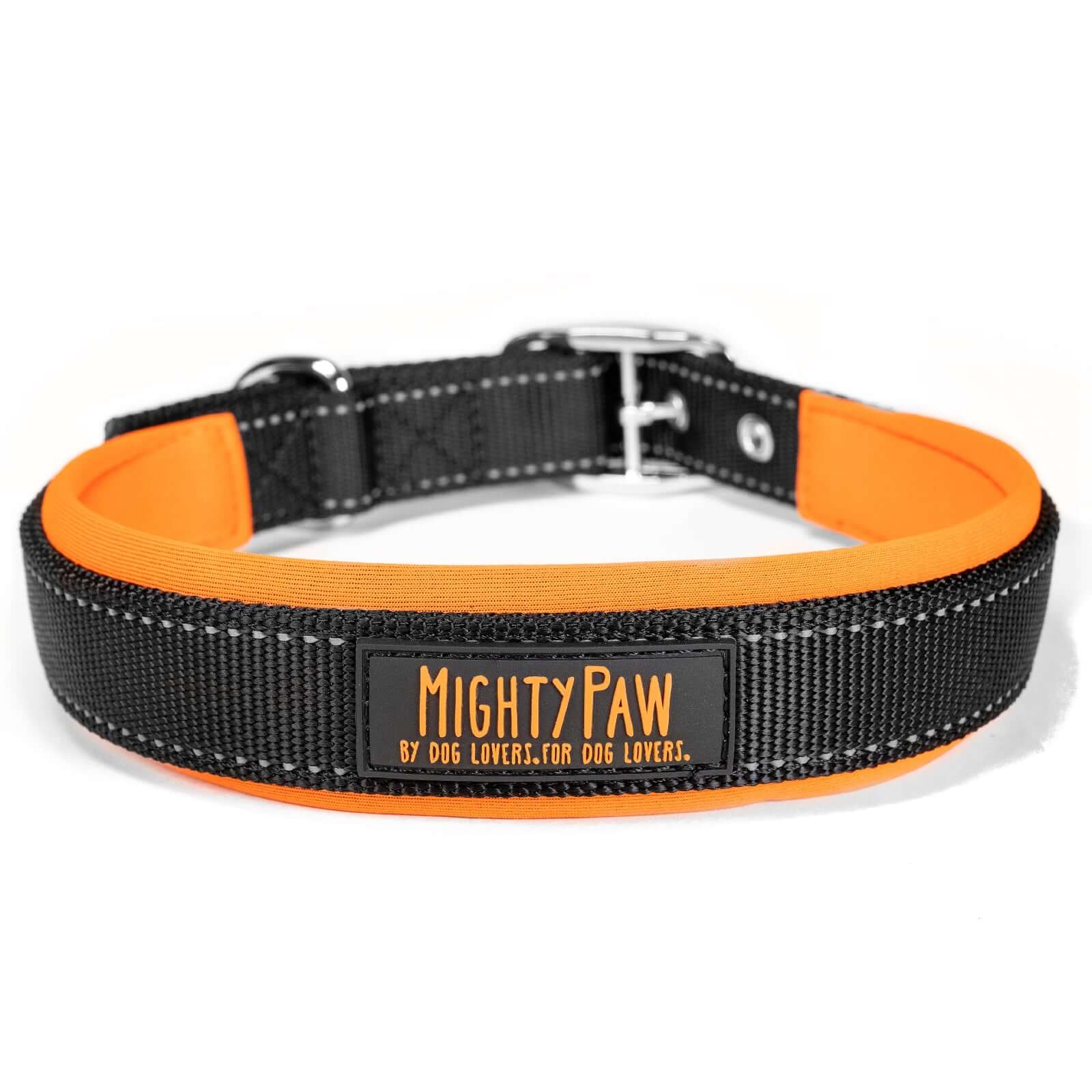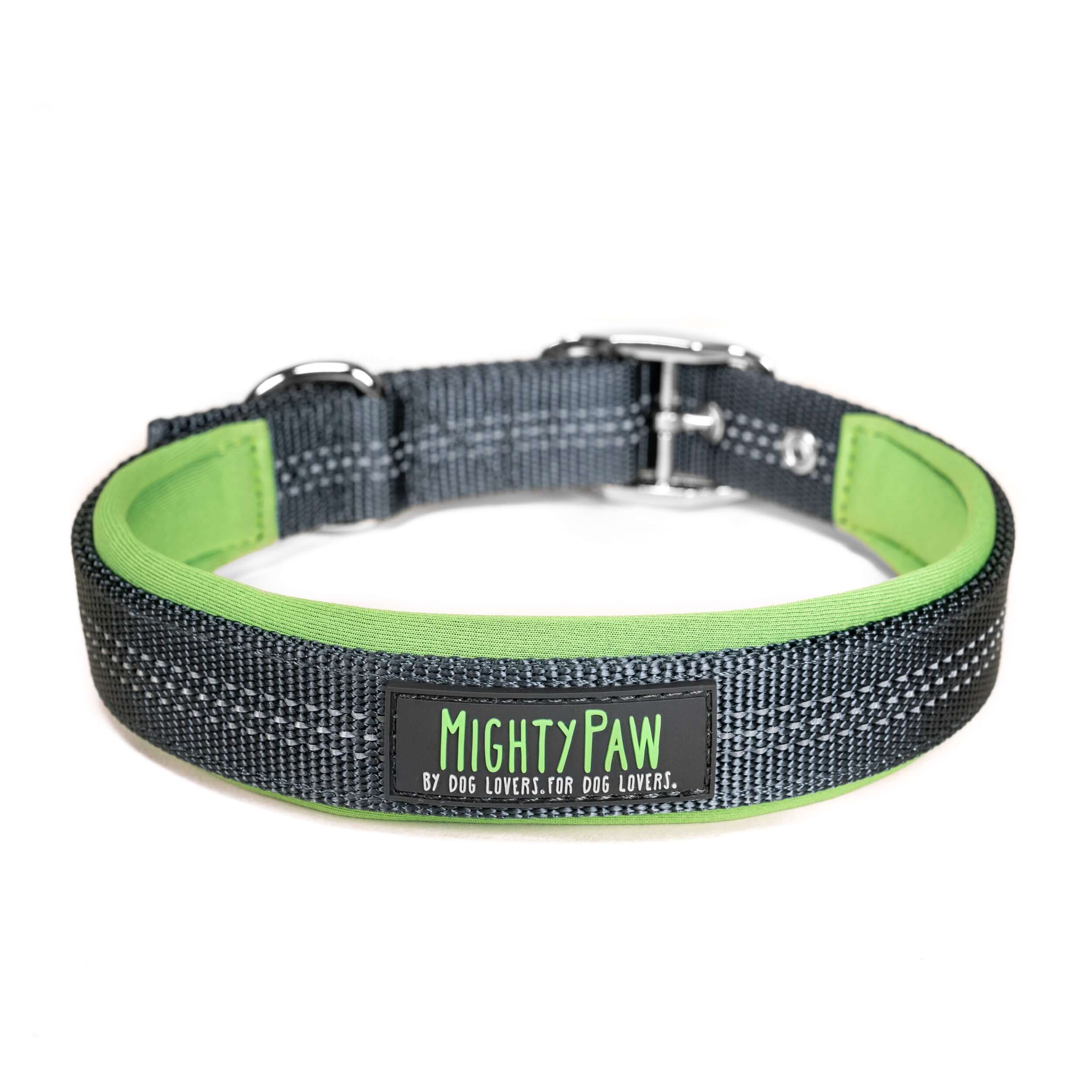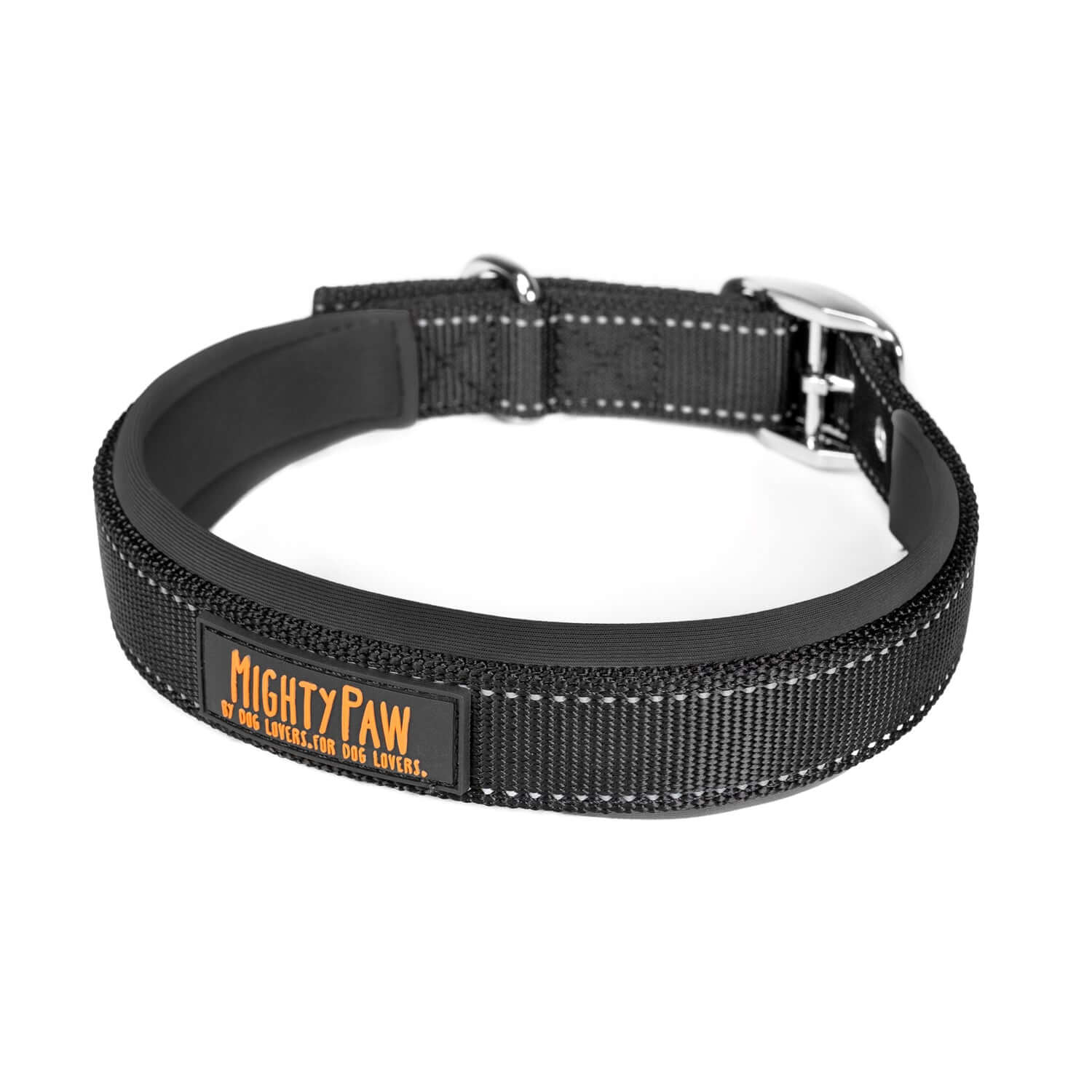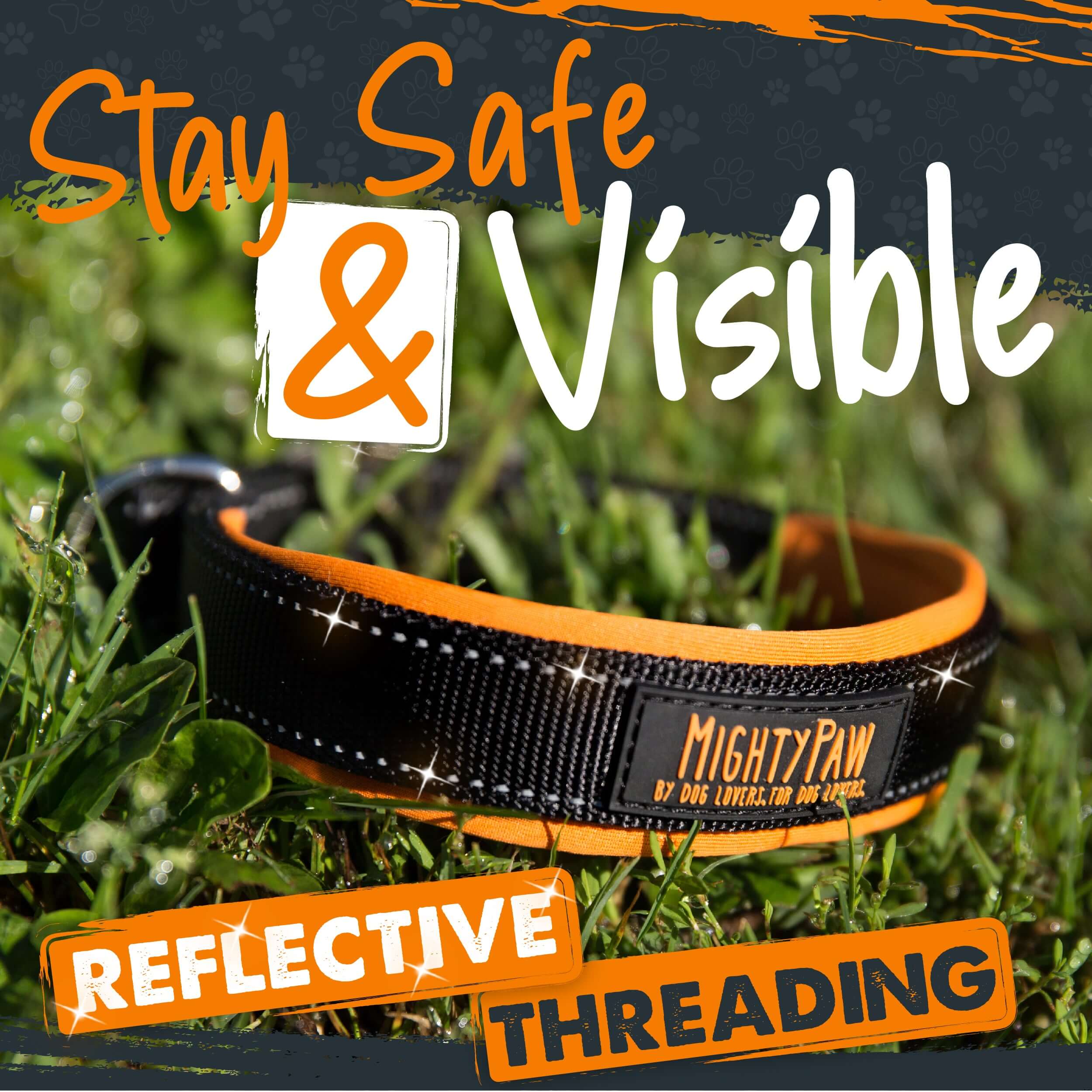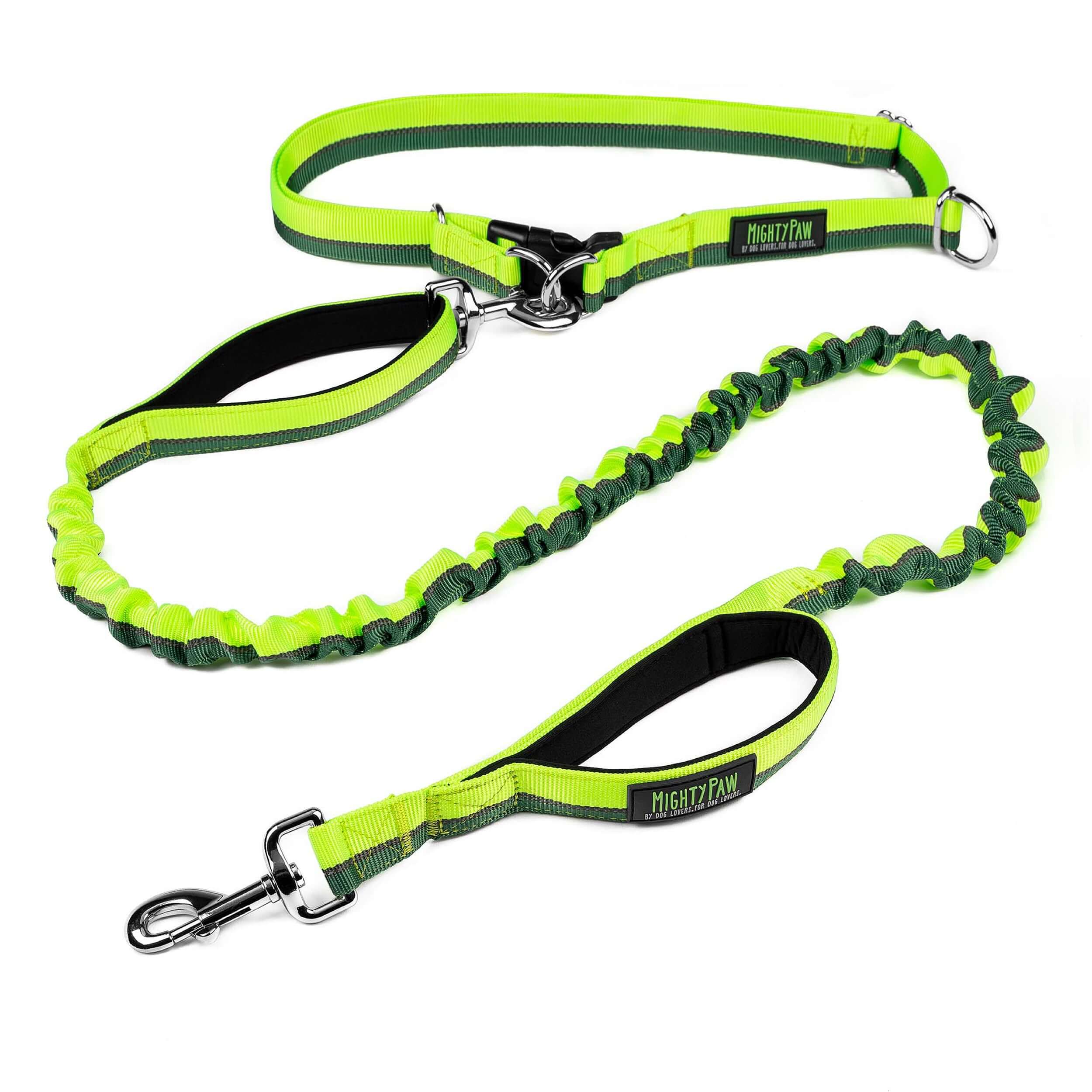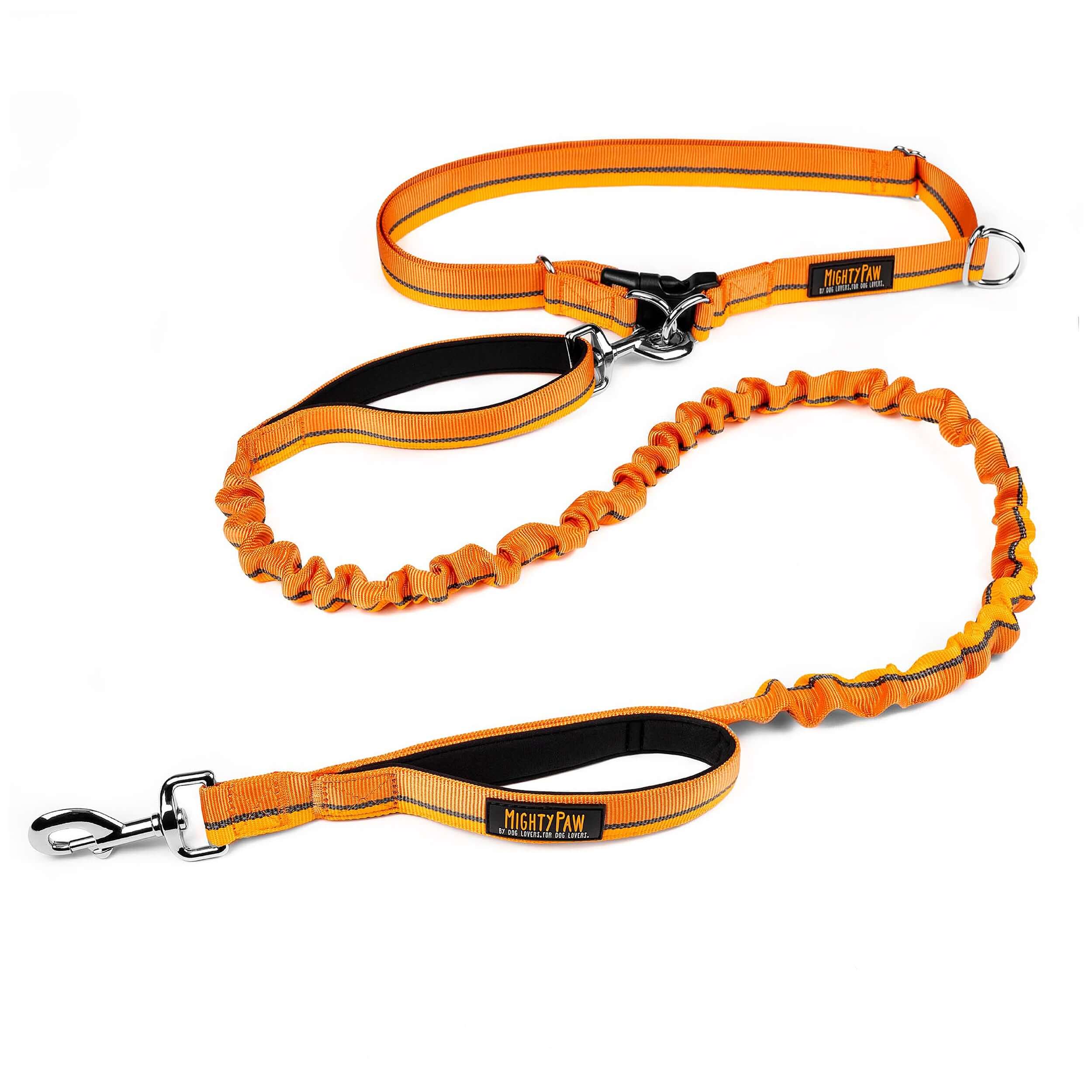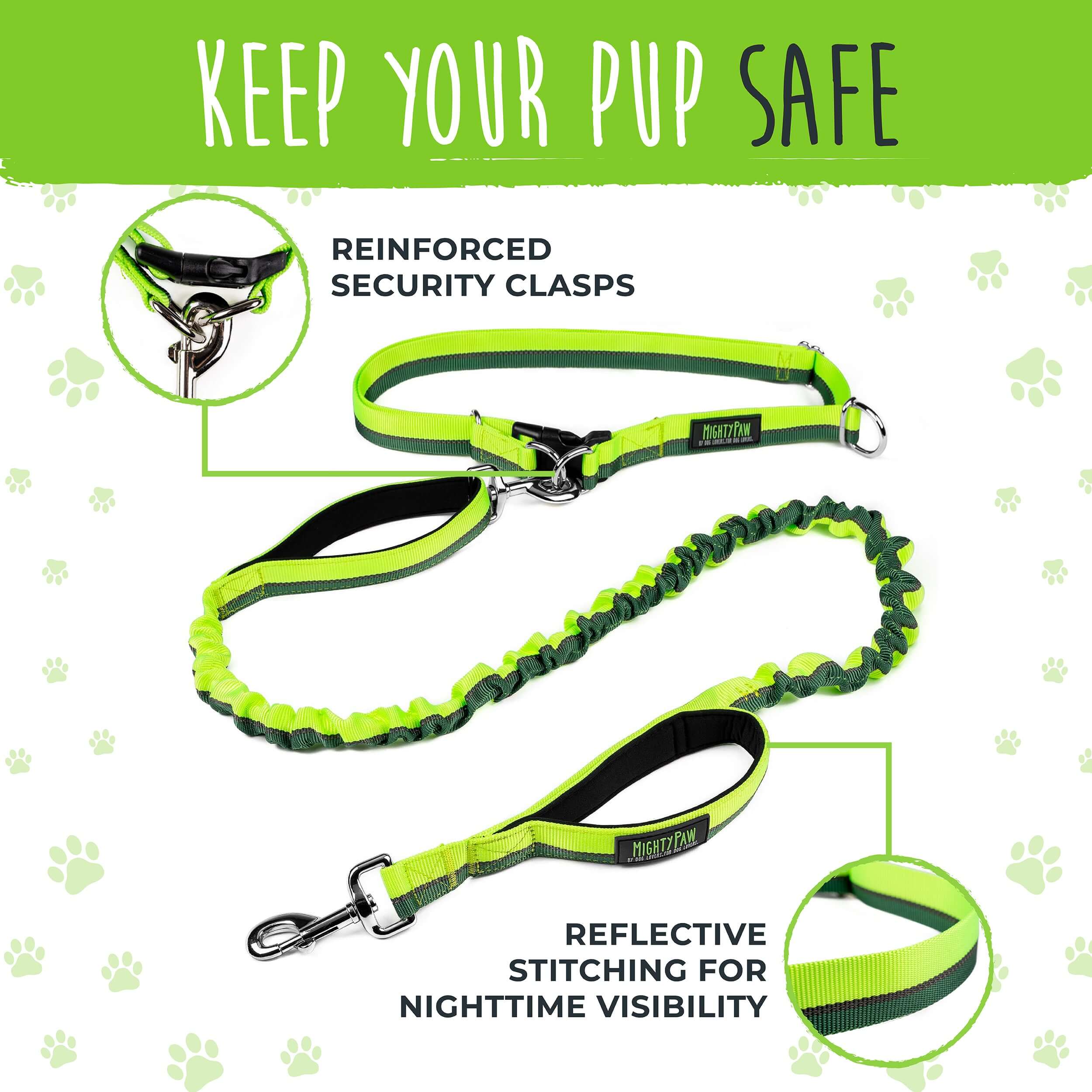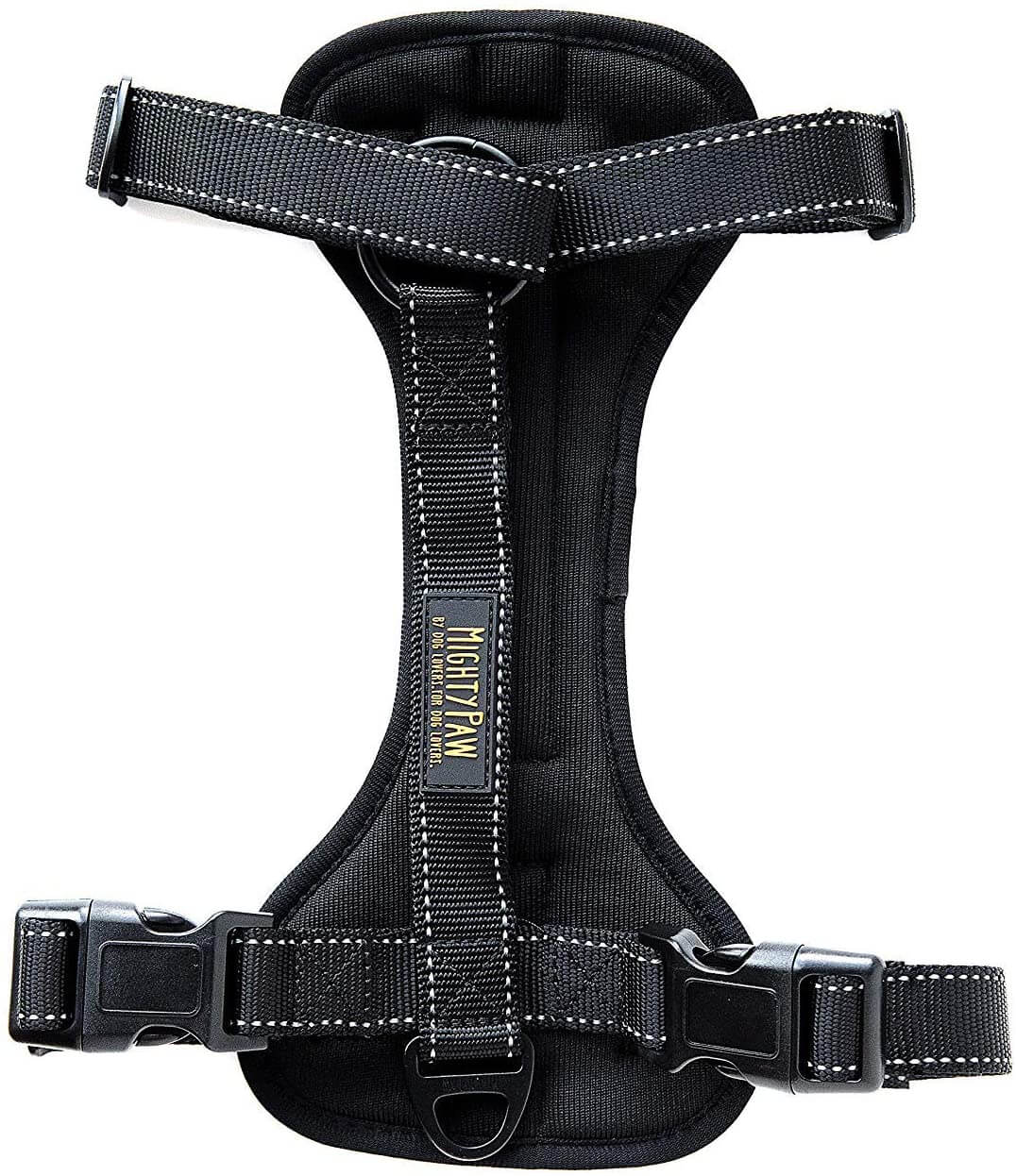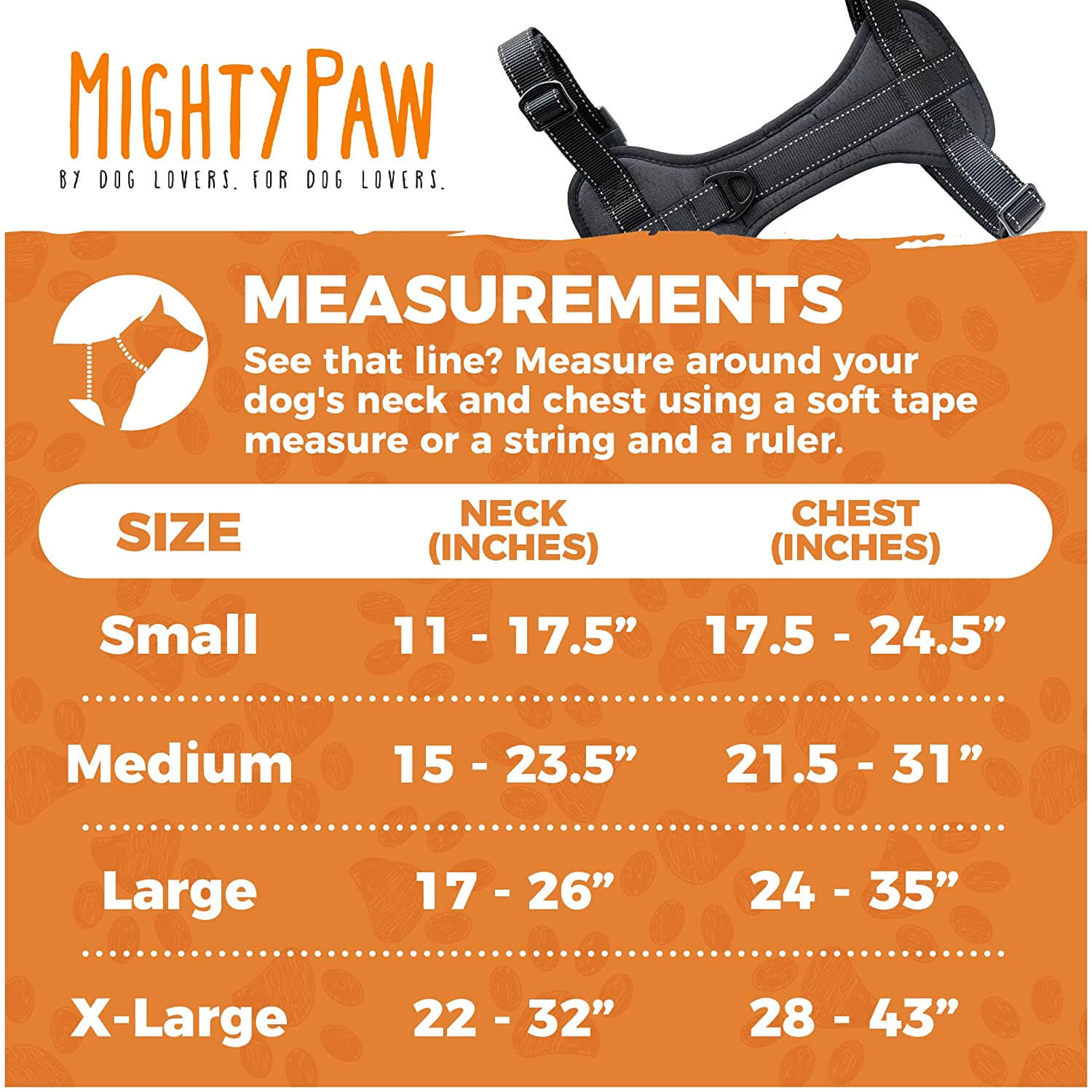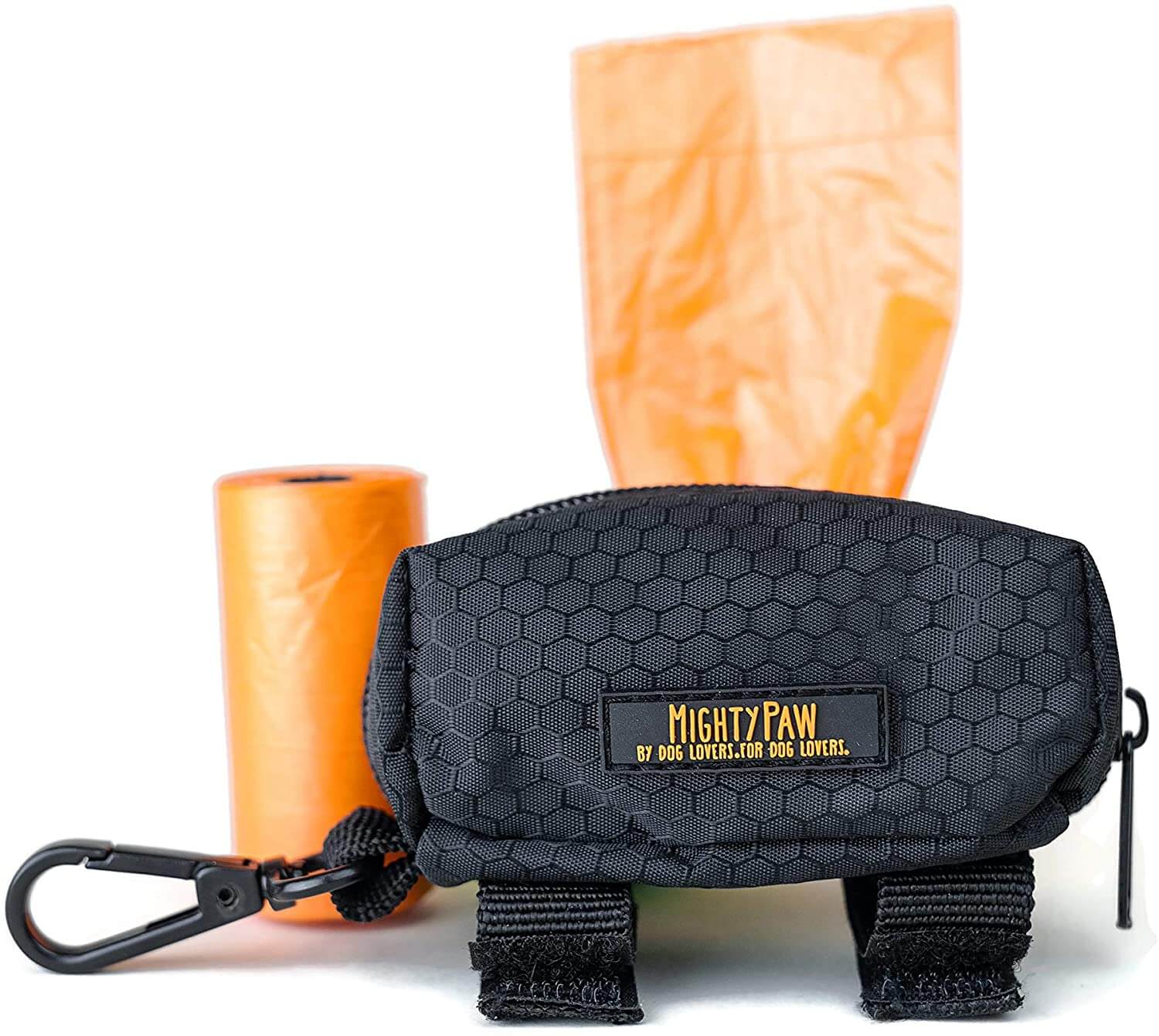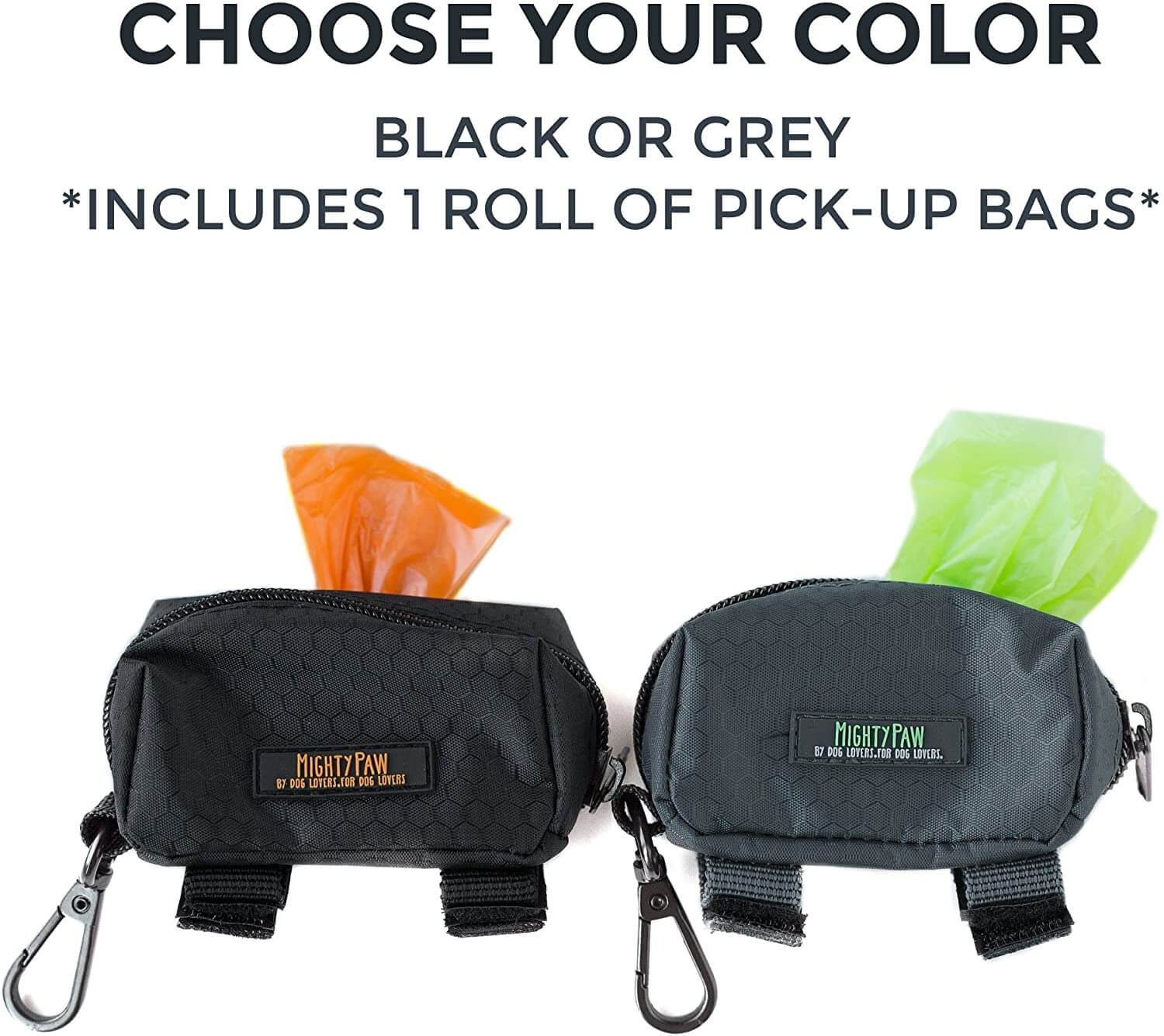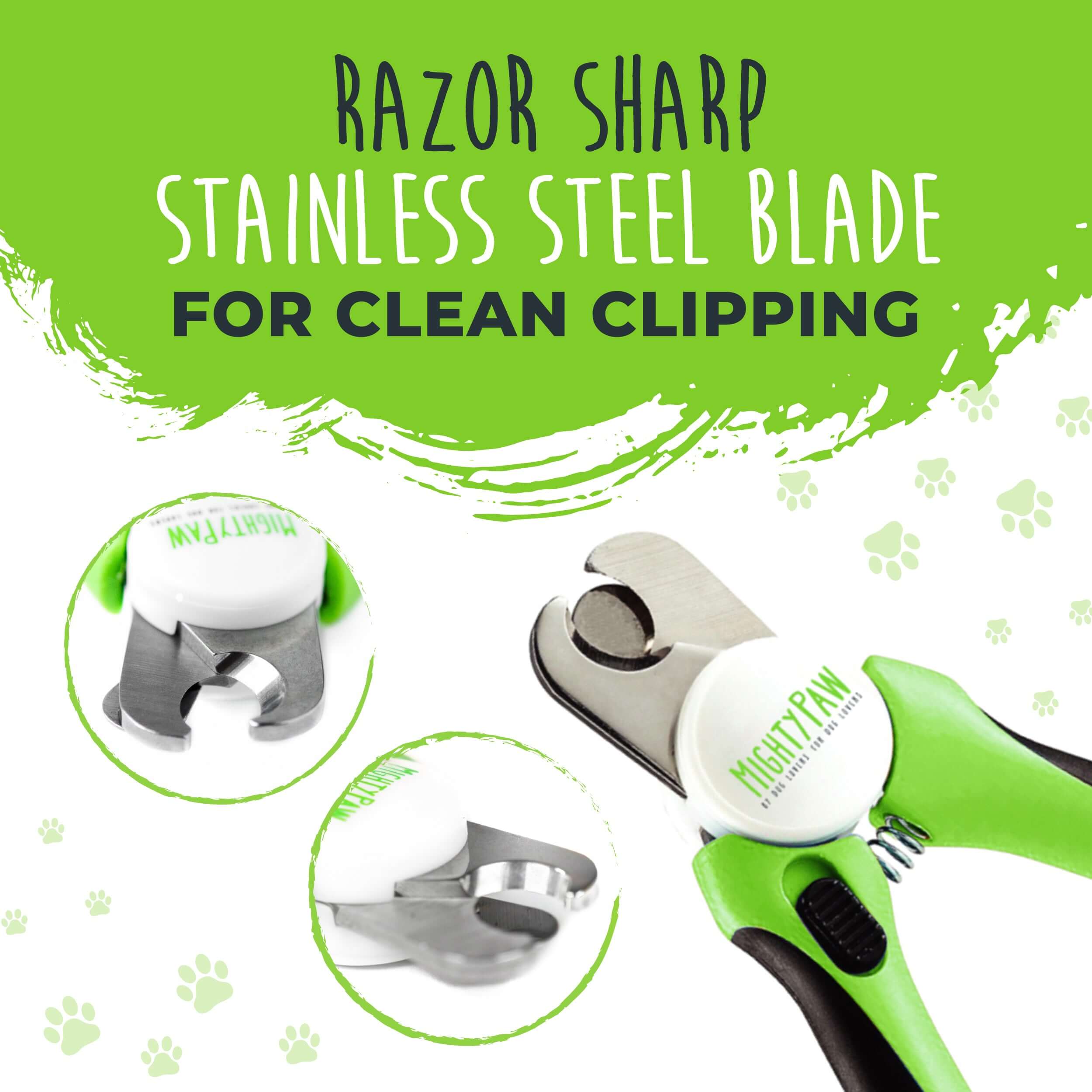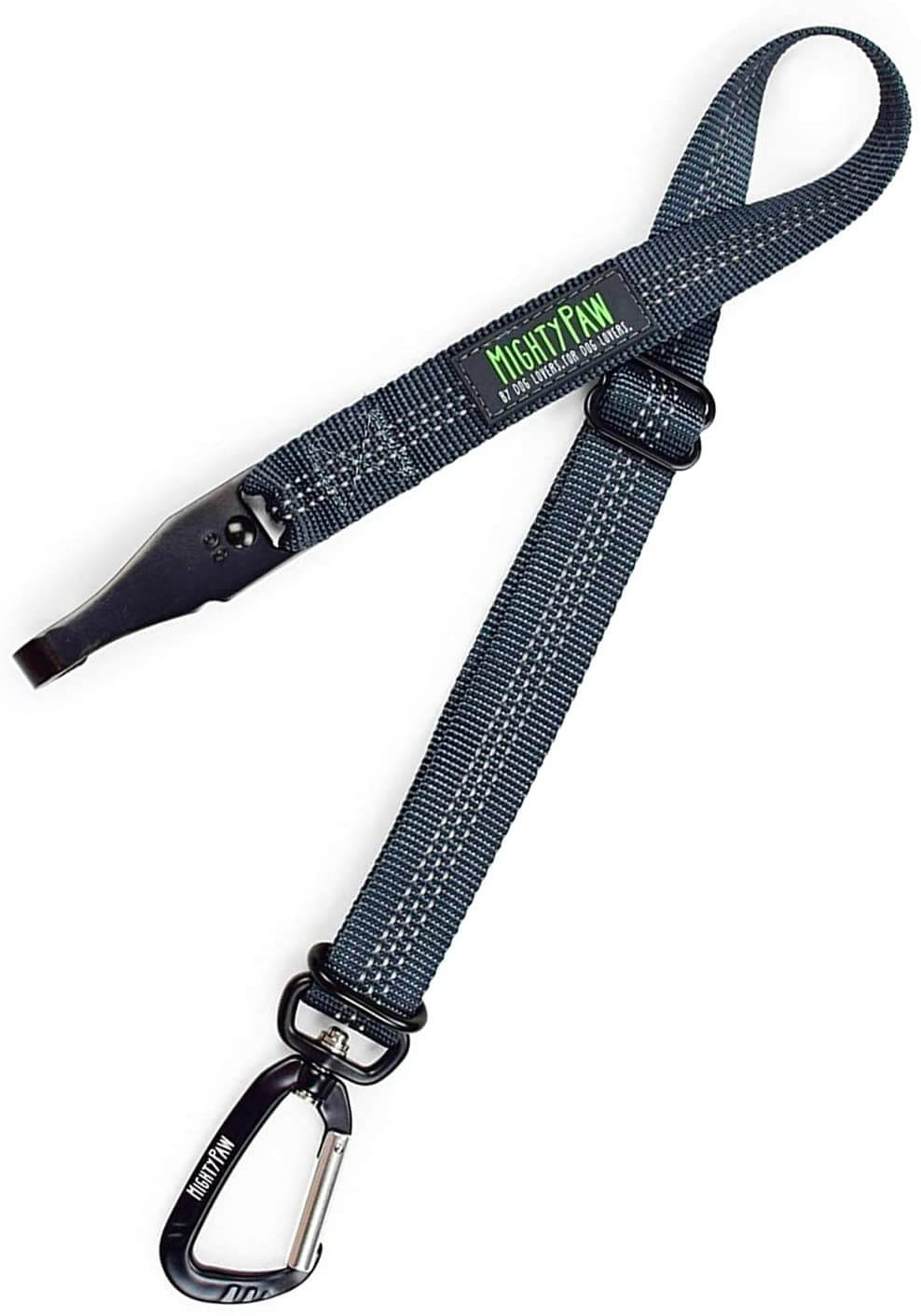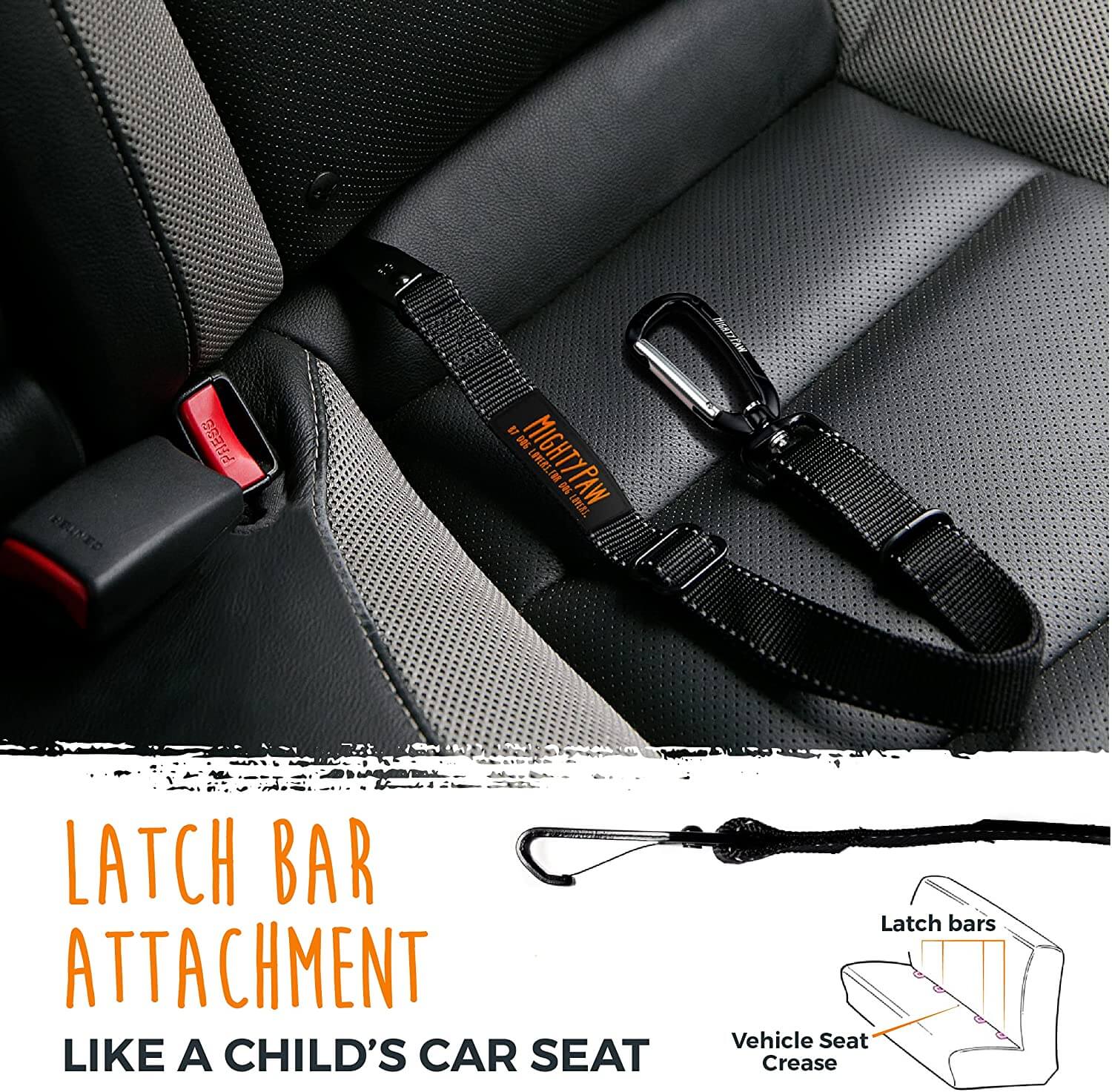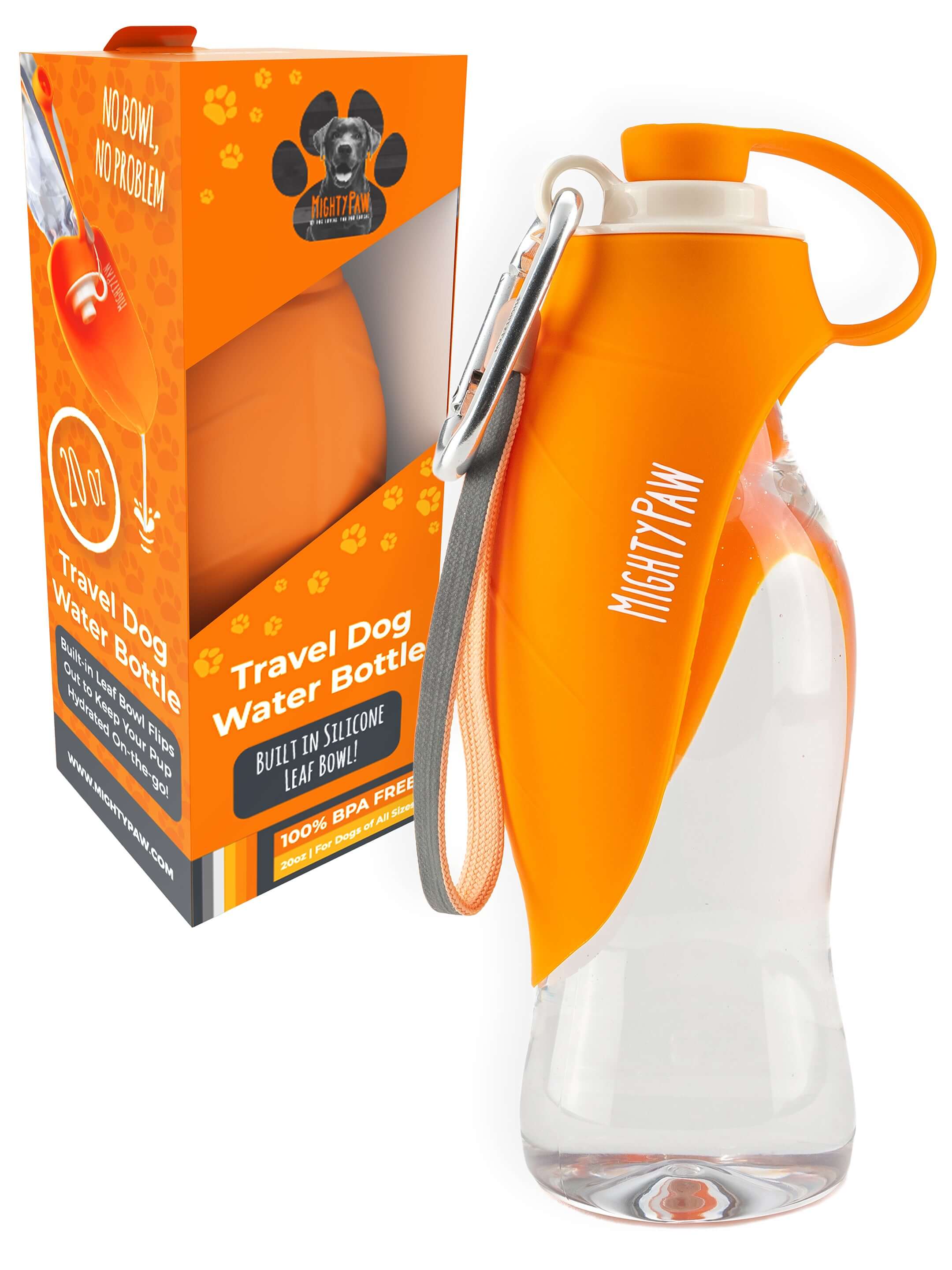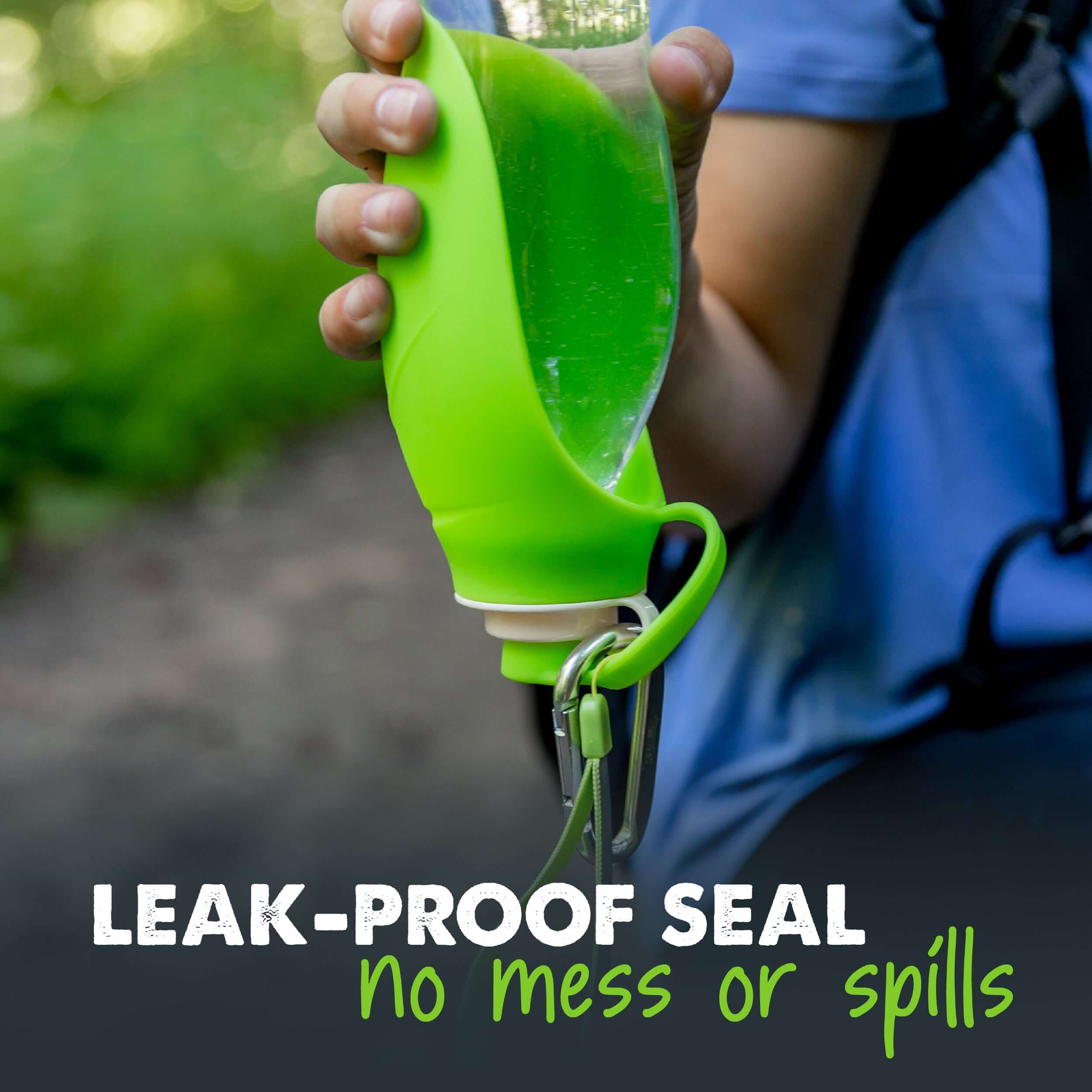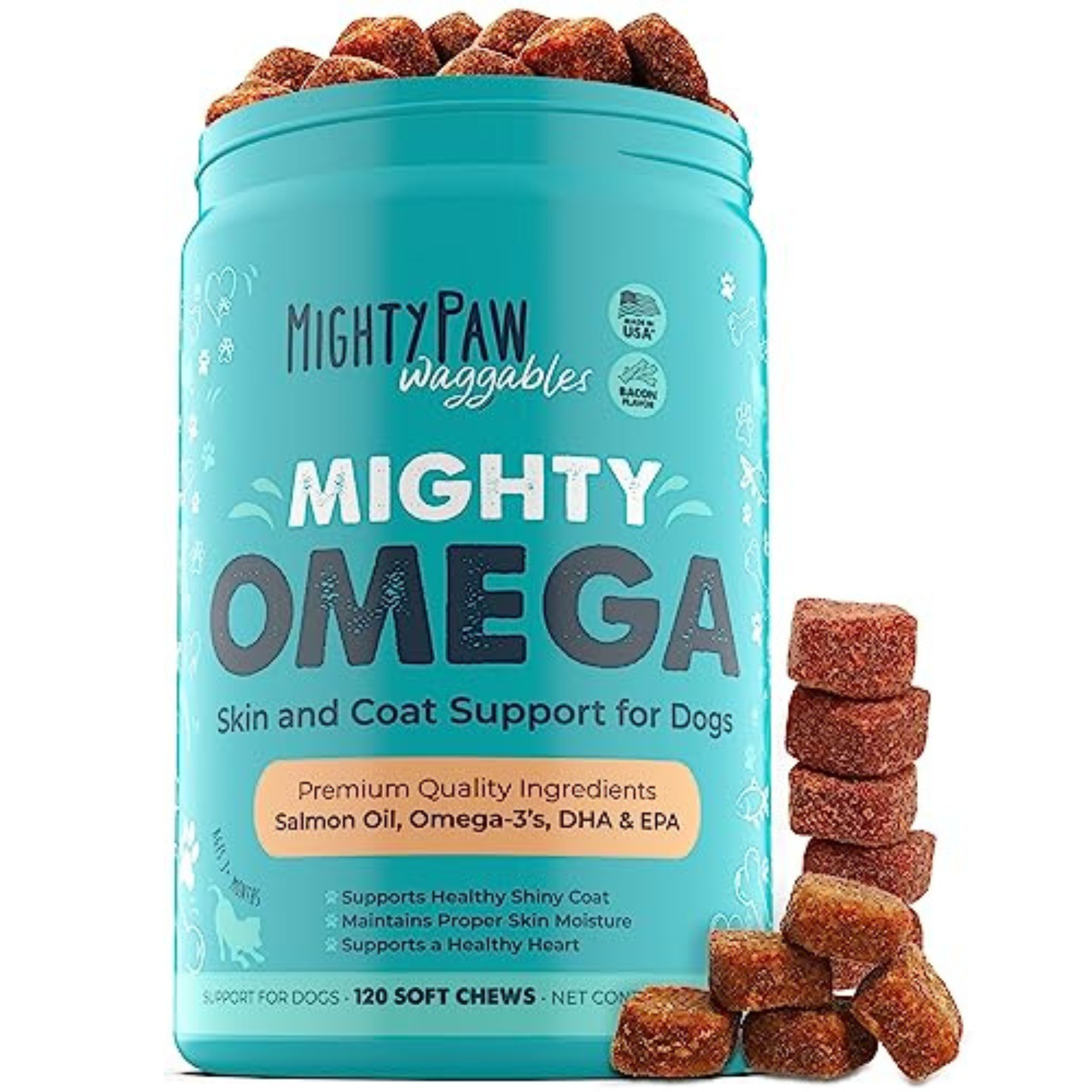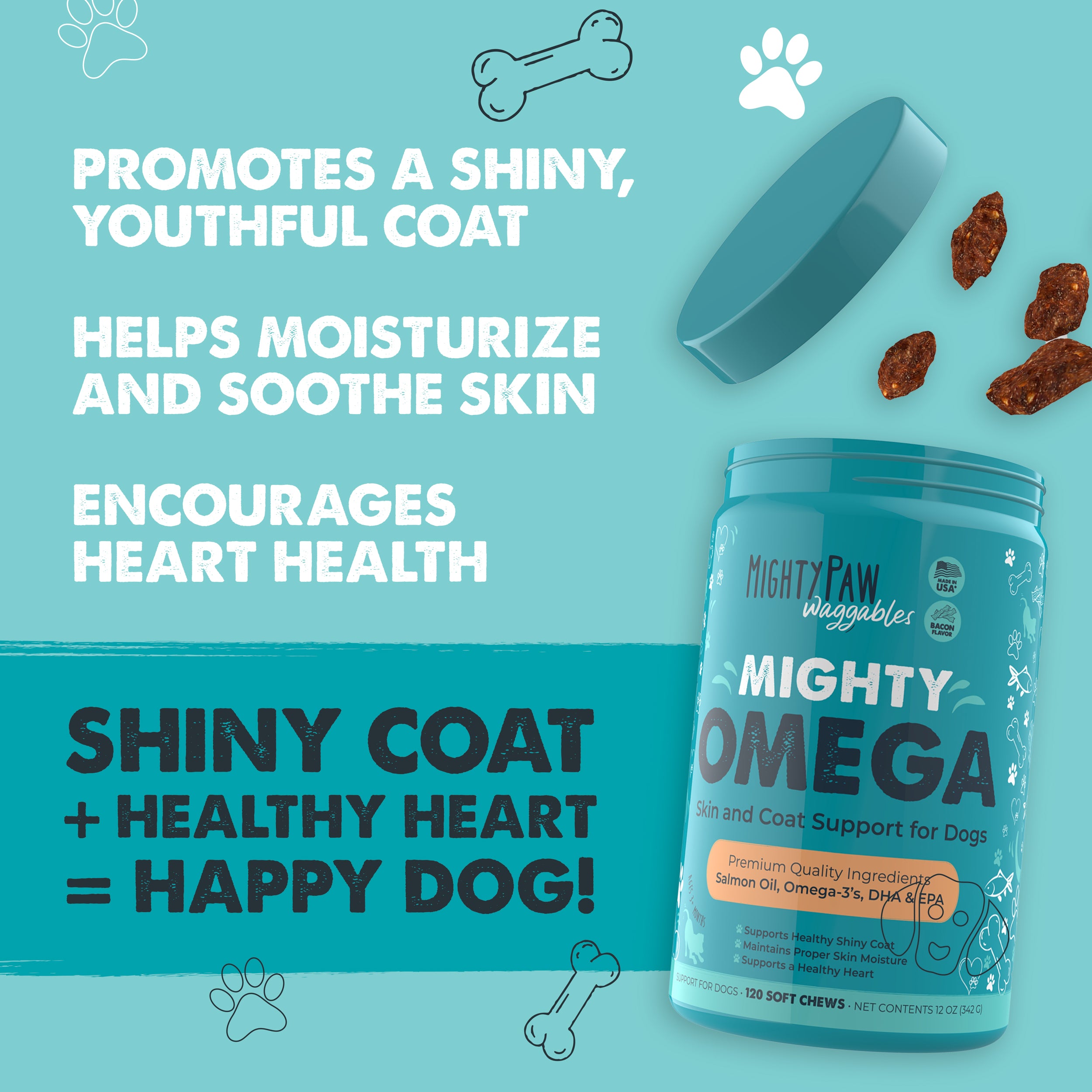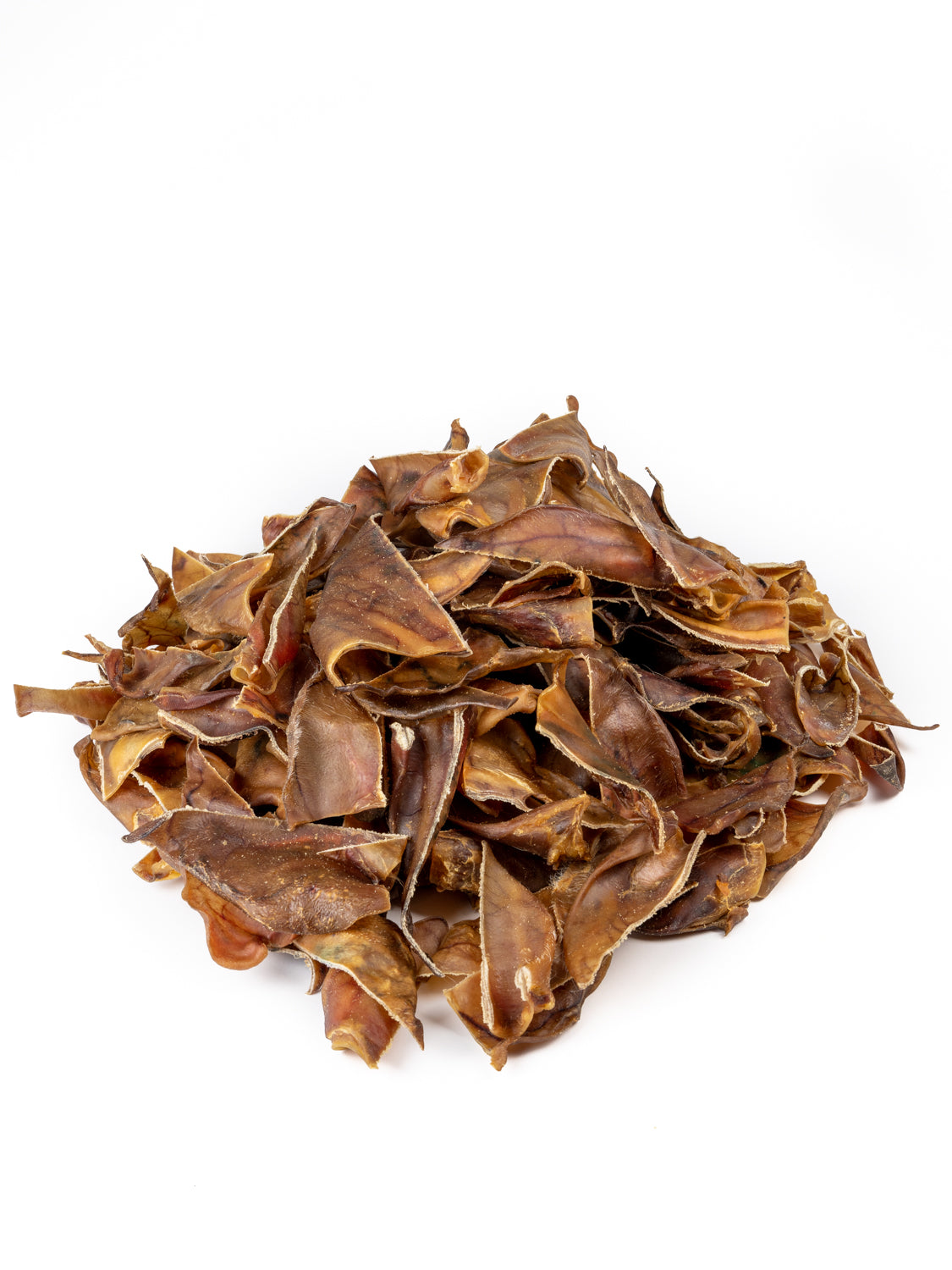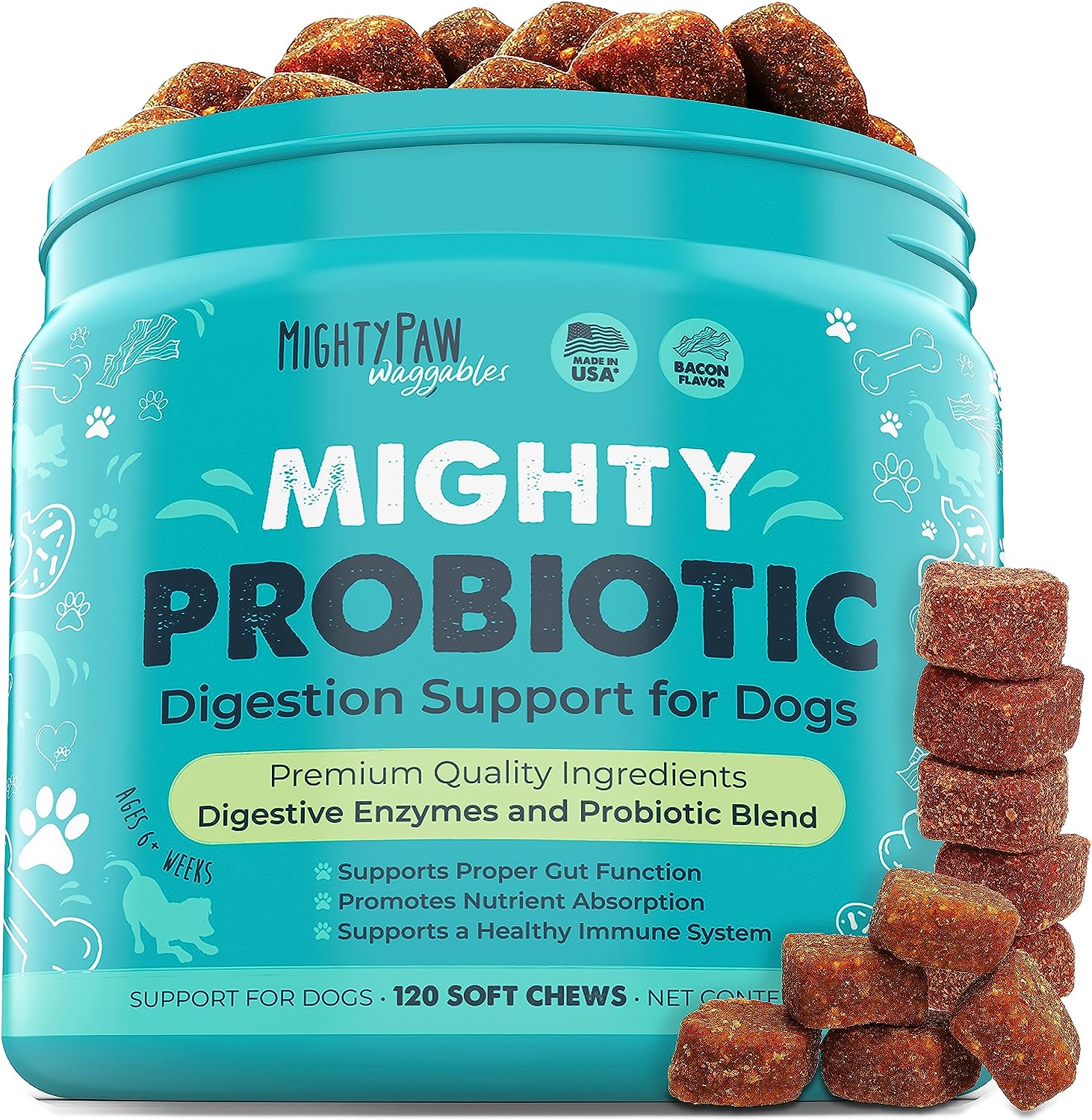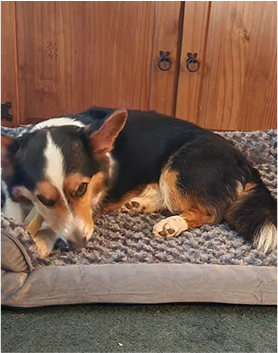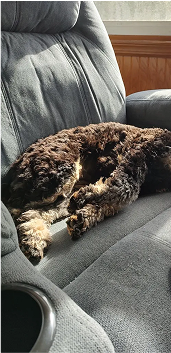Our dog lift harness for back legs is not your typical dog walking harness. Instead, it's a dog harness to support back legs in dogs with weak, collapsing or paralyzed hind legs.
It also helps your dog offload weight when they're recovering from surgery. For example, knee surgery, hip replacement surgery, surgery after fractures, etc.
That said, our dog lifting harness is geared towards both older dogs AND younger dogs!
While older dogs naturally tend to develop weak hind legs over time, younger dogs can have trouble getting around in their everyday life as well.
Especially if they're affected by spinal stroke, hip dysplasia or arthritis. Yep, as sad as that sounds, unfortunately young dogs aren't immune to these diseases.
So in this blog post, I'm pointing out the 4 daily activities during which our dog lift harness offers tremendous back leg support for dogs, as well as:
- What are the symptoms of back leg weakness in dogs?
- How long do dogs need to recover from hind leg weakness?
- What is degenerative myelopathy (DM) in dogs?
- What is canine hip dysplasia?
Dog Lift Harness for 4 Daily Activities - Life Changing Back Leg Support For Your Dog
1. Back Leg Support On Stairs & Furniture
If you're looking for a dog harness to support back legs going up-and downstairs, you just found it!
Our dog sling helps offload weight from your pup's joints when they need to climb stairs, either inside your home or outside.
It also helps them on and off their favorite furniture!
The Dog Lifting Harness is lined with super soft fleece material to keep your dog’s belly cushioned while you help them move around.
2. Help Your (Old) Dog Get Into the Car
Now, how do you lift a(n old) dog into the car if he or she has mobility issues?
...again, with our dog rear lift harness!
All you have to do is place the cushioned pad under your dog's belly, as close as possible to their back legs. Next, adjust the length of the straps to fit your size and that's it - now you're ready to help lift your pup into the car!
3. Potty Relief for Dogs with Mobility Problems
Dogs with weak hind legs are going to have a hard time squatting to poop because they simply can't hold that position on their own without collapsing.
This is another scenario where our dog lift harness will come in super handy. It will also help prevent constipation since it allows your pup to relieve themselves as needed.
4. Rear Leg Support for Slow Dog Walks
Granted, dogs with weak hind legs won't be able to go for super long walks, but a change of scenery at a slow pace is good for their emotional wellbeing.
Even if they'll only walk a hundred yards with your help, they'll still be able to take in new sniffs and read their "doggie news".
Mighty Paw Dog Lift Harness: More Features & Benefits
COMFORT FOR YOU: The adjustable slings help remove stress from your back because you don’t have to bend over to help your dog. We also added a comfort handle to protect your hands.
FITS ALL DOGS: We designed our dog lift harness in 3 sizes for small, medium and large pups.
EASY TO CLEAN: Don’t worry if your dog accidentally soils the pet sling! We designed it with materials that are machine washable. Simply toss it in your washing machine and take the stress out of cleanup!
What are the Symptoms of Back Leg Weakness in Dogs?
We all know that dogs are masters at disguising physical pain, so they may not necessarily whine because of it. However, if you notice any of the following in your dog, it's a clear sign that their back legs are getting weaker:
- Reluctance to jump (onto furniture, into cars etc)
- Loss of coordination & balance
- Difficulty standing up
- Dragging back legs
- Worn down nails
- Lameness
- Swelling
- Incontinence
- Loss of muscle
- Weight gain
- Collapse
It's always best to schedule an exam with your vet once you do notice hind leg weakness in your dog.
How Long Do Dogs Need to Recover From Hind Leg Weakness?
It depends on how severely your dog's hind legs are affected by the weakness.
Arthritis can typically be managed fairly easily with a combination of gentle exercise (no jumping, walking, swimming) in addition to a diet for overweight dogs.
Note that excess weight can do a lot of damage on doggie joints and make your overweight dog more prone to fractures, intervertebral disc disease (IVDD) as well as anterior crucial ligament (ACL) tears.
So be aware of your dog's ideal body weight. If you're not sure, ask your vet or breeder!
Now, dogs who've had knee, leg or hip surgery typically need several months, potentially even up to a year, to fully recover.
During that time, they need a lot of rest as well as specific treatment approaches to allow their knee and leg to recover and heal. Treatment can consist of:
- Physical therapy (including hydrotherapy and specific exercises)
- Anti-inflammatories & pain meds
- Laser therapy
- Acupuncture
Of course resting is not always easy, especially with young dogs who are full of energy. This scenario is when crate rest comes in really handy! Set them up with low calorie dog chews to keep them entertained, for example our single-ingredient bully sticks or limited-ingredient yak cheese dog chews.
Because: Chewing is a natural behavior that all dogs crave. It's a wonderful boredom buster that exercises their jaws and helps keep their teeth clean, so if your pup is looking at crate rest, I suggest you stock up on healthy doggie chews!
Now, obviously your pup won't be able to stay in their crate non-stop and will at least have to go outside to potty and move around a little bit.
That's when our dog lifting harness will be a true life saver because it helps your dog offload weight from his or her joints.
What is Degenerative Myelopathy (DM) in Dogs?
Degenerative myelopathy aka DM affects the spinal cord in a slow but progressive manner that starts with weak hind legs and ultimately ends with paralysis. It usually progresses to the front legs as well.
This disease is caused by a genetic mutation and can not be cured. However, there are several ways to increase the quality of life of those dogs affected.
For example:
- Physical therapy (namely swimming and gentle walking on soft surfaces)
- Placing rugs throughout your home if you don't have carpet (minimizes risk of slipping and falling)
- Offering back leg stability with our dog lift harness
What is Canine Hip Dysplasia?
Similar to DM, hip dysplasia in dogs is a hereditary condition with abnormally formed hip joints.
However, treatment is possible! The earlier, the better because untreated hip dysplasia will result in chronic arthritis. That's why regular vet check ups are so important in growing puppies!
Although all size dogs can be affected by hip dysplasia, most dogs who require treatment are larger breeds, for example:
- German Shepherds
- Golden Retrievers
- Labrador Retrievers
Treatment depends on the severity and can either be done with medication or require surgery.
Supplements rich in healthy omega-3 fatty acids, glucosamine and chondroitin are also often recommended! That's because they promote joint & cartilage health.
Additionally, treatment can consist of physical therapy, acupuncture and laser therapy.
Recap Mighty Paw Dog Lift Harness
Benefits
- Supports dogs with mobility problems
- For all size dogs
- Cushion for your dog
- No belly chafing
- Comfort for your hands
- Easy to use & clean
- Built to last
Features
- Heavy duty nylon webbing
- Soft fleece interior lining
- Adjustable sling straps
- Removable comfort handle with grip support
- Strong metal hardware
- Machine washable materials
- Available in 3 sizes (S, M, L)
If you enjoyed this blog post, you may also like:

